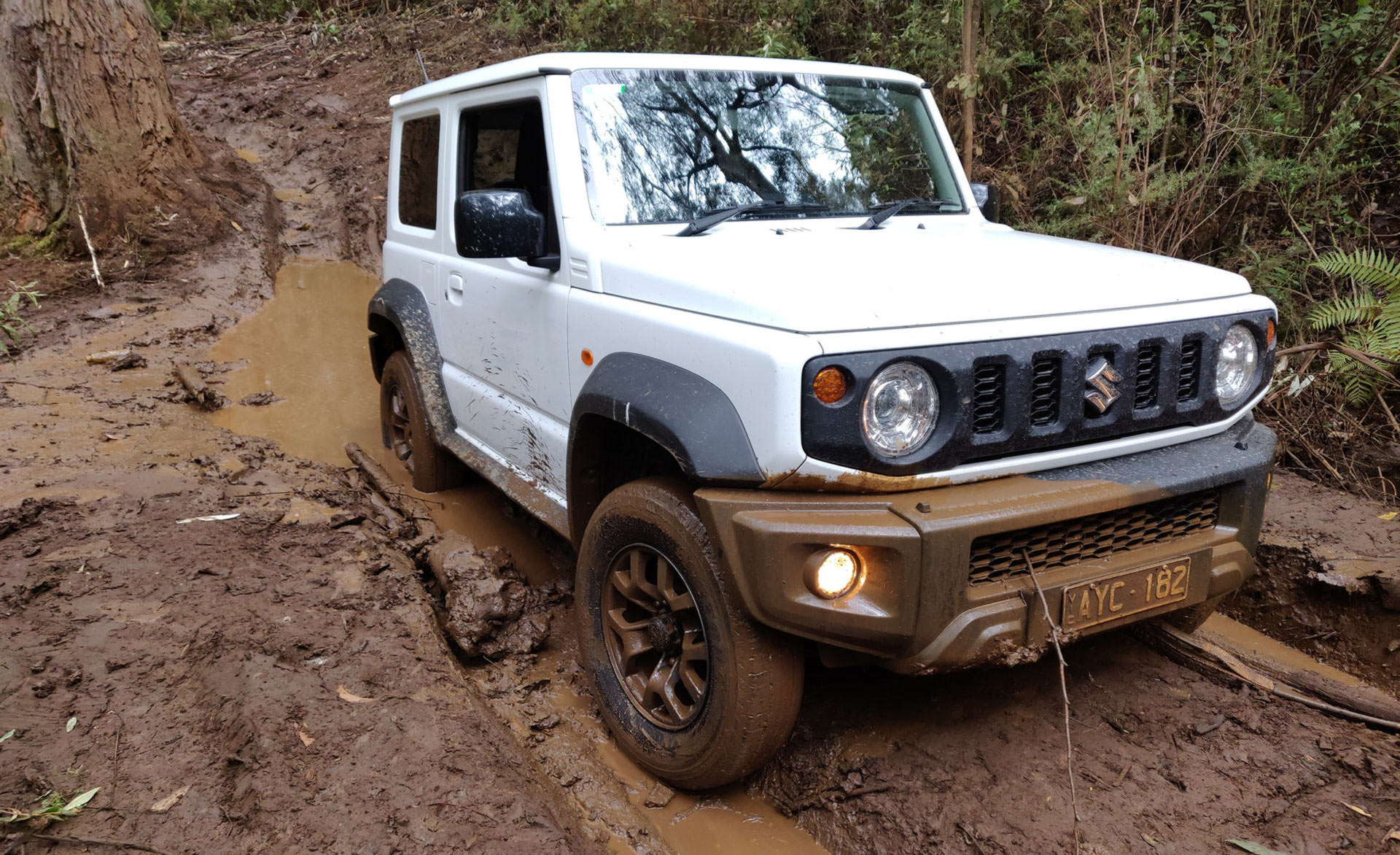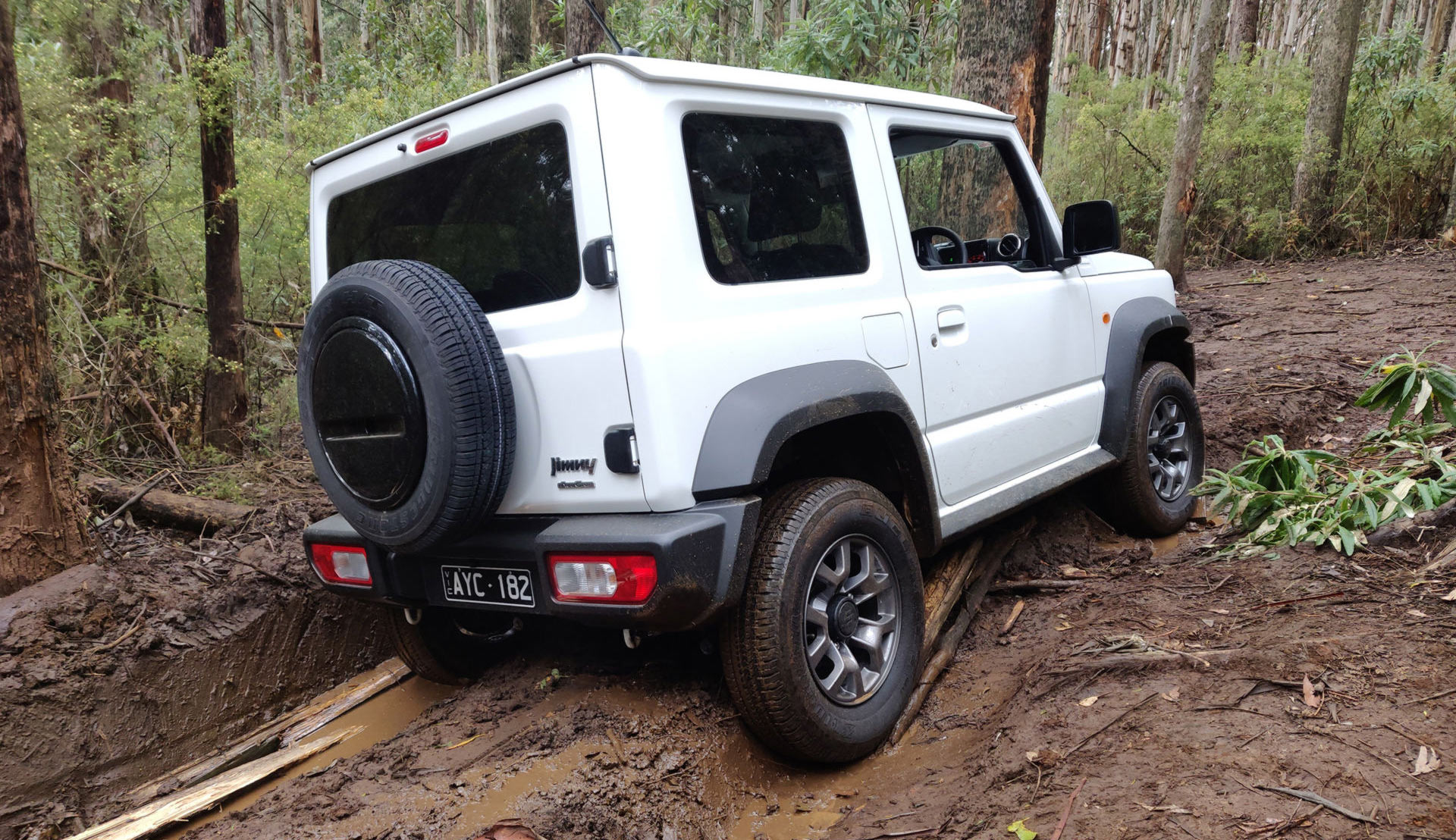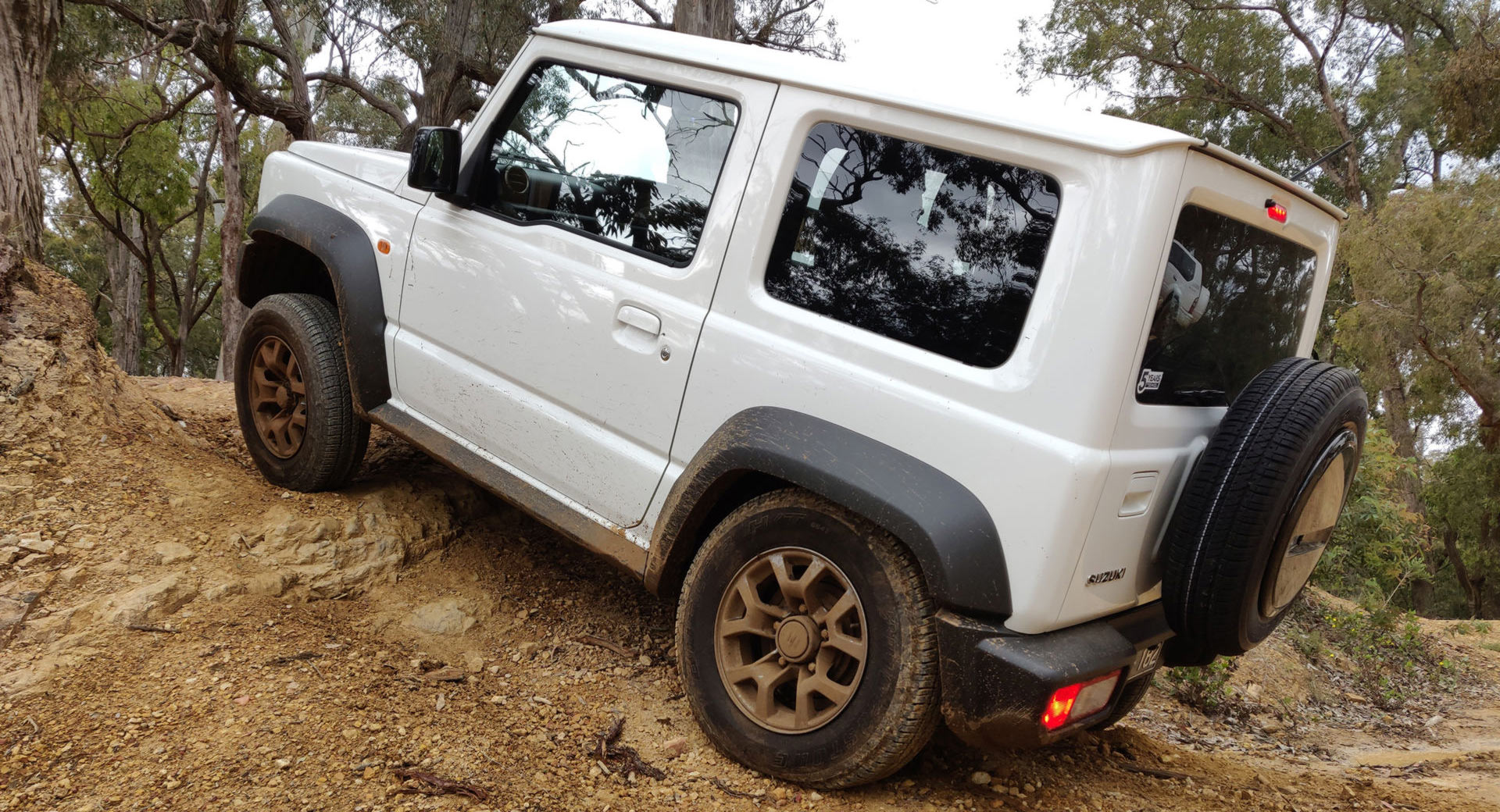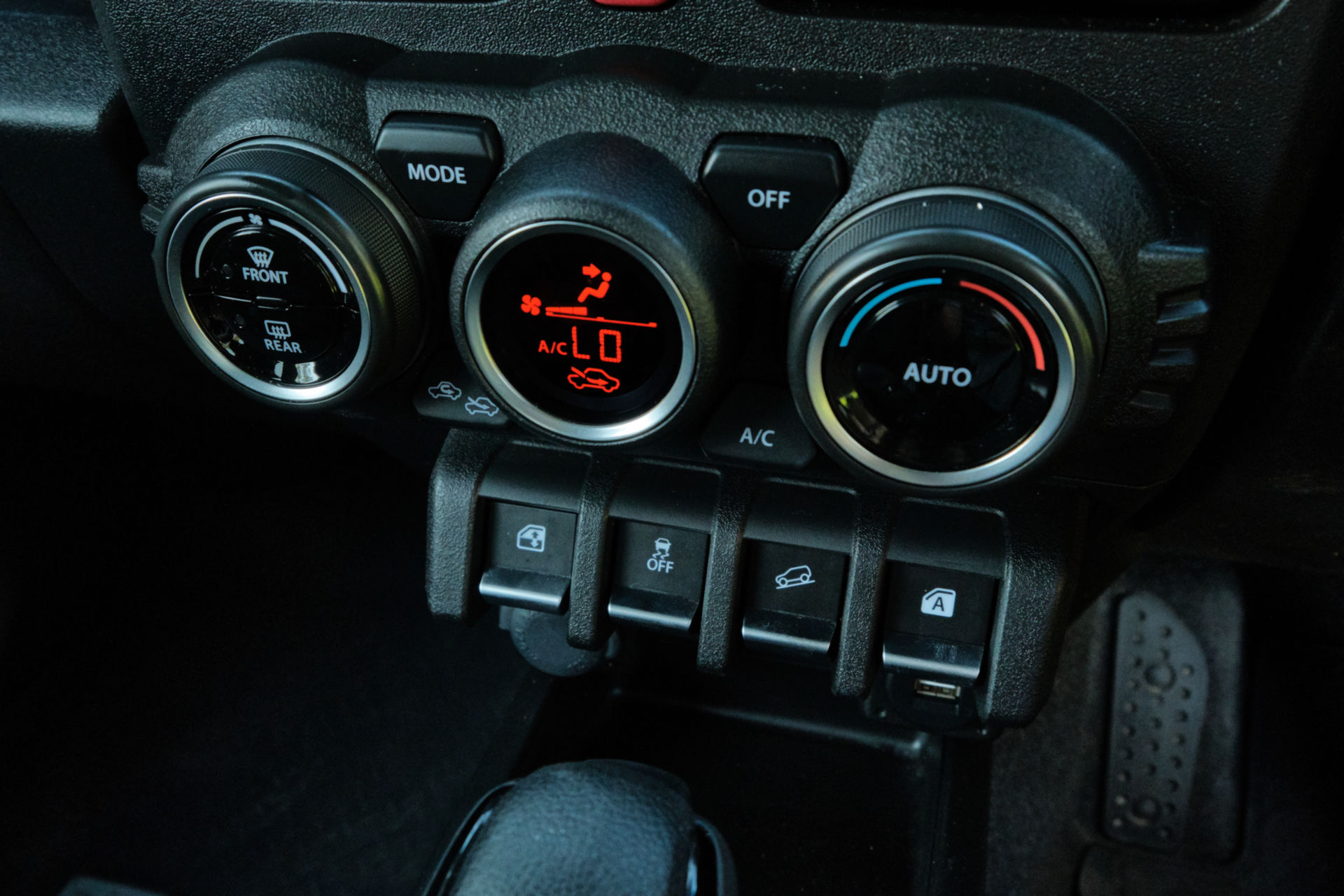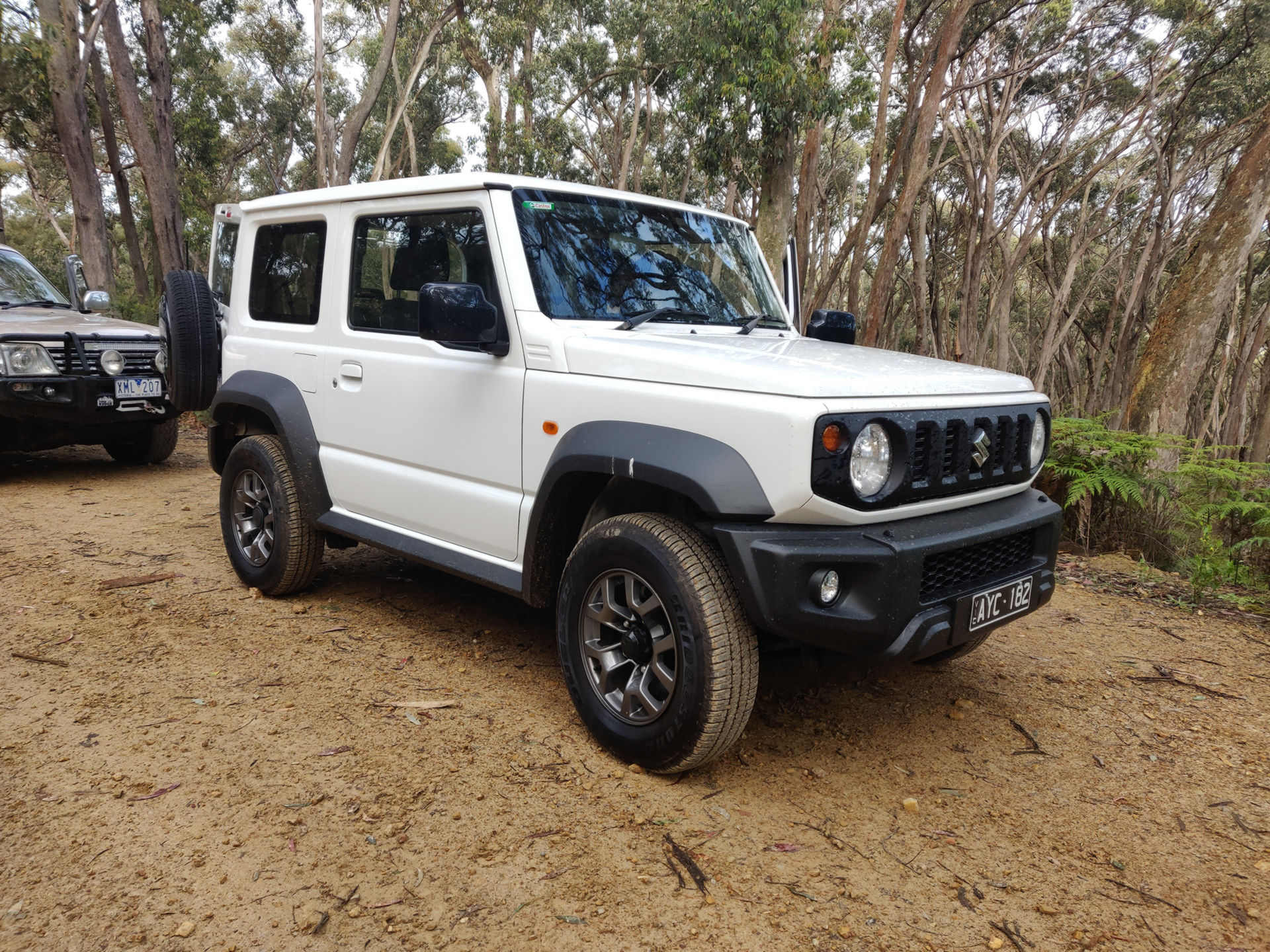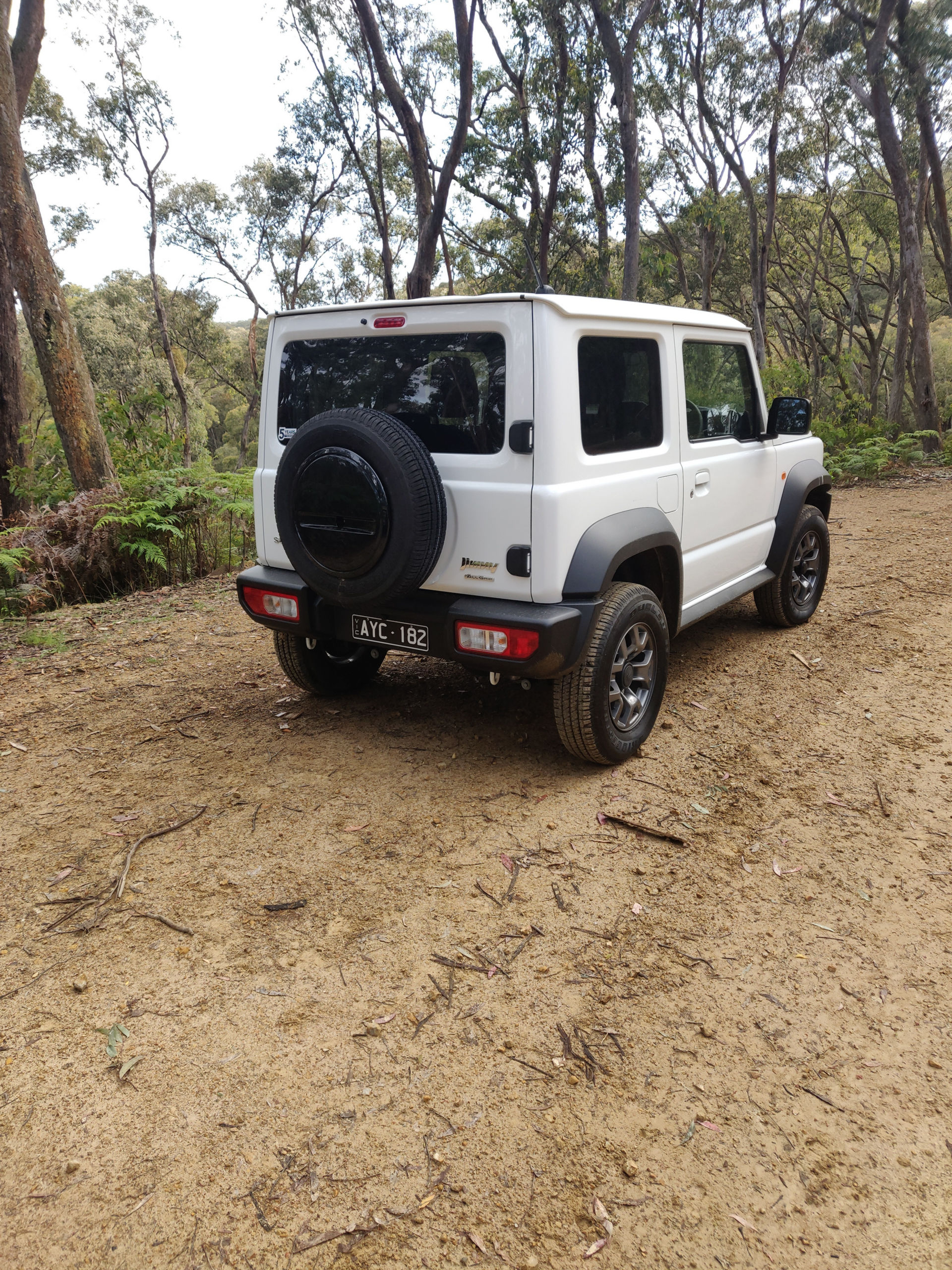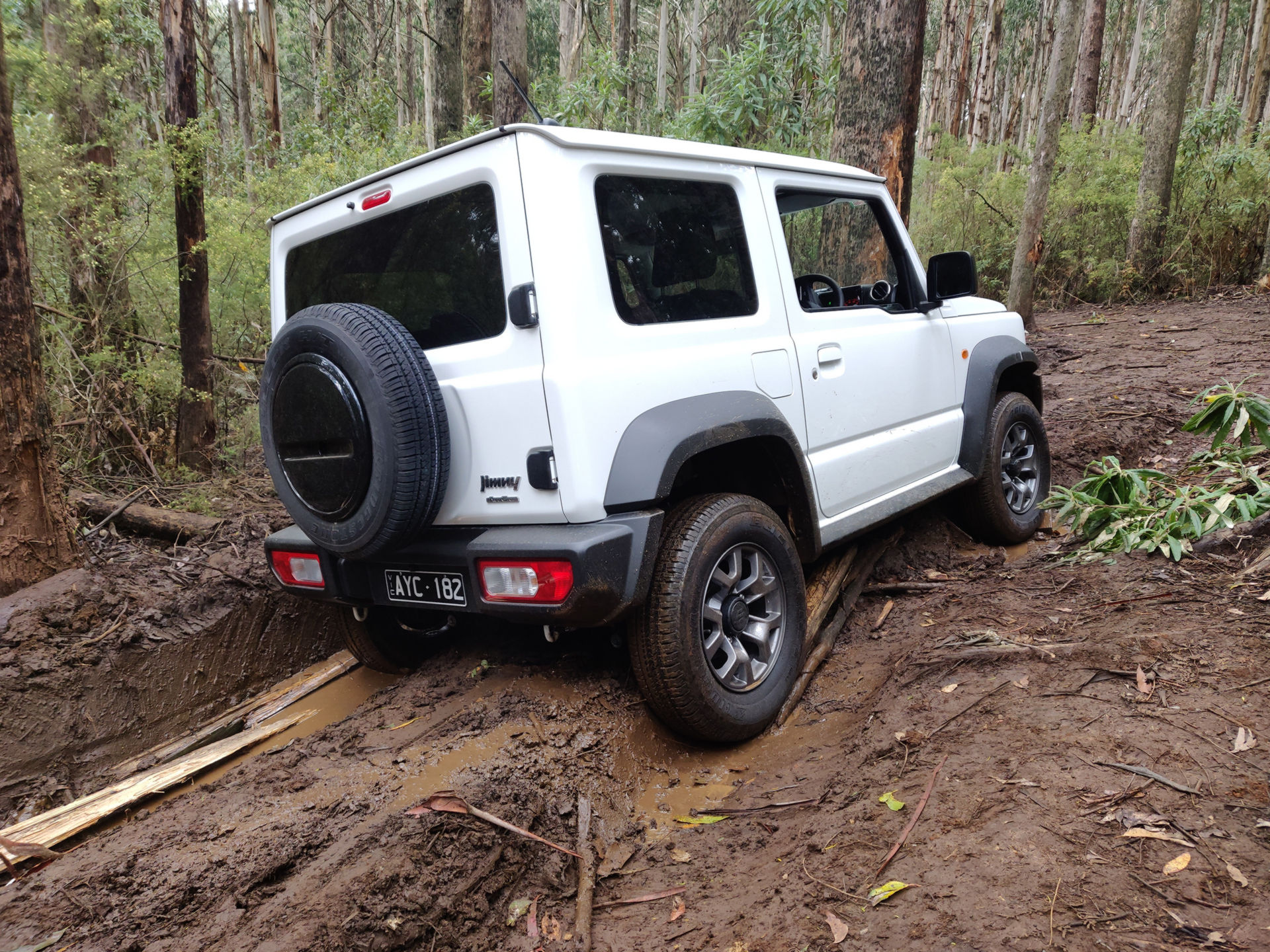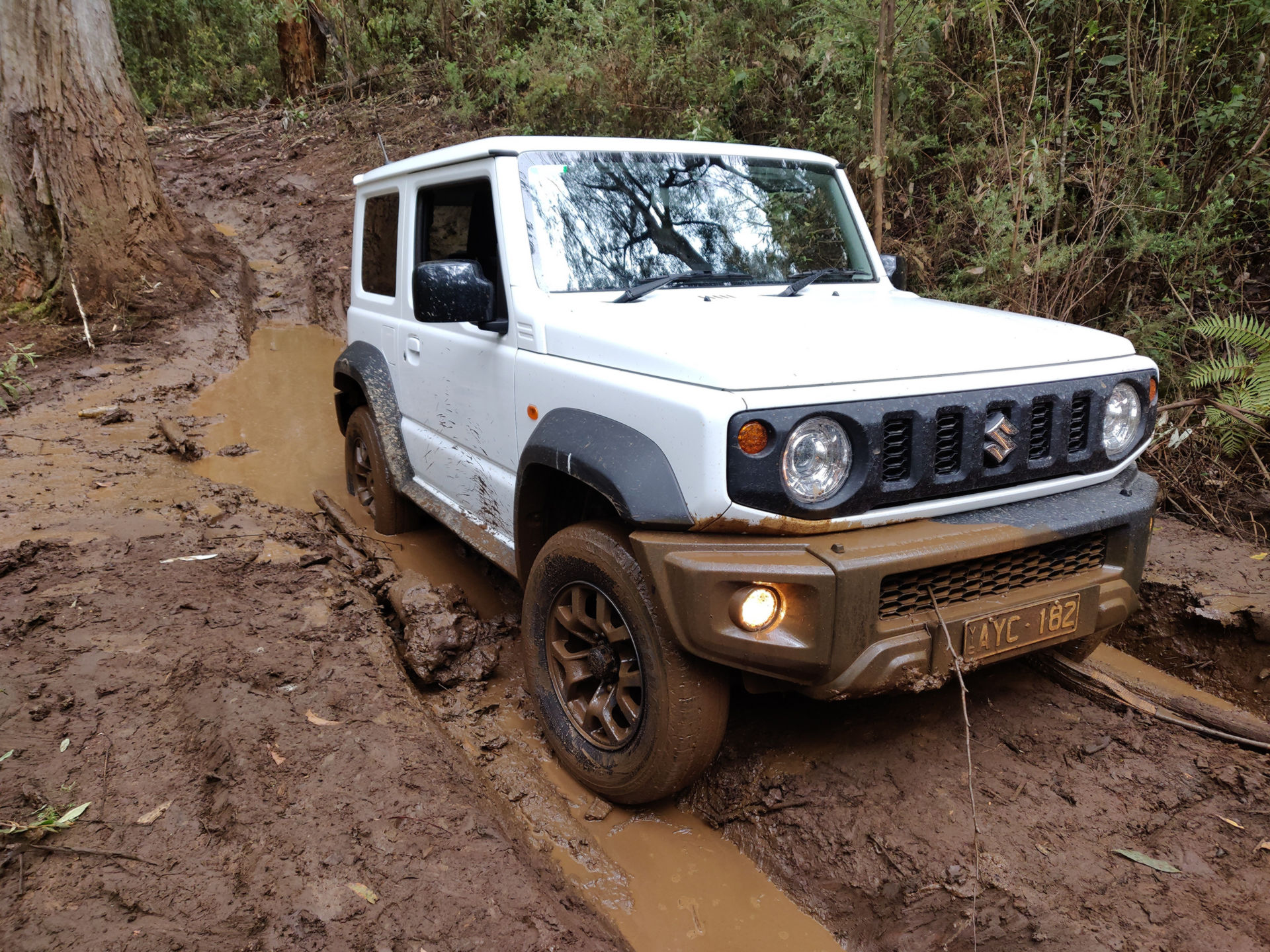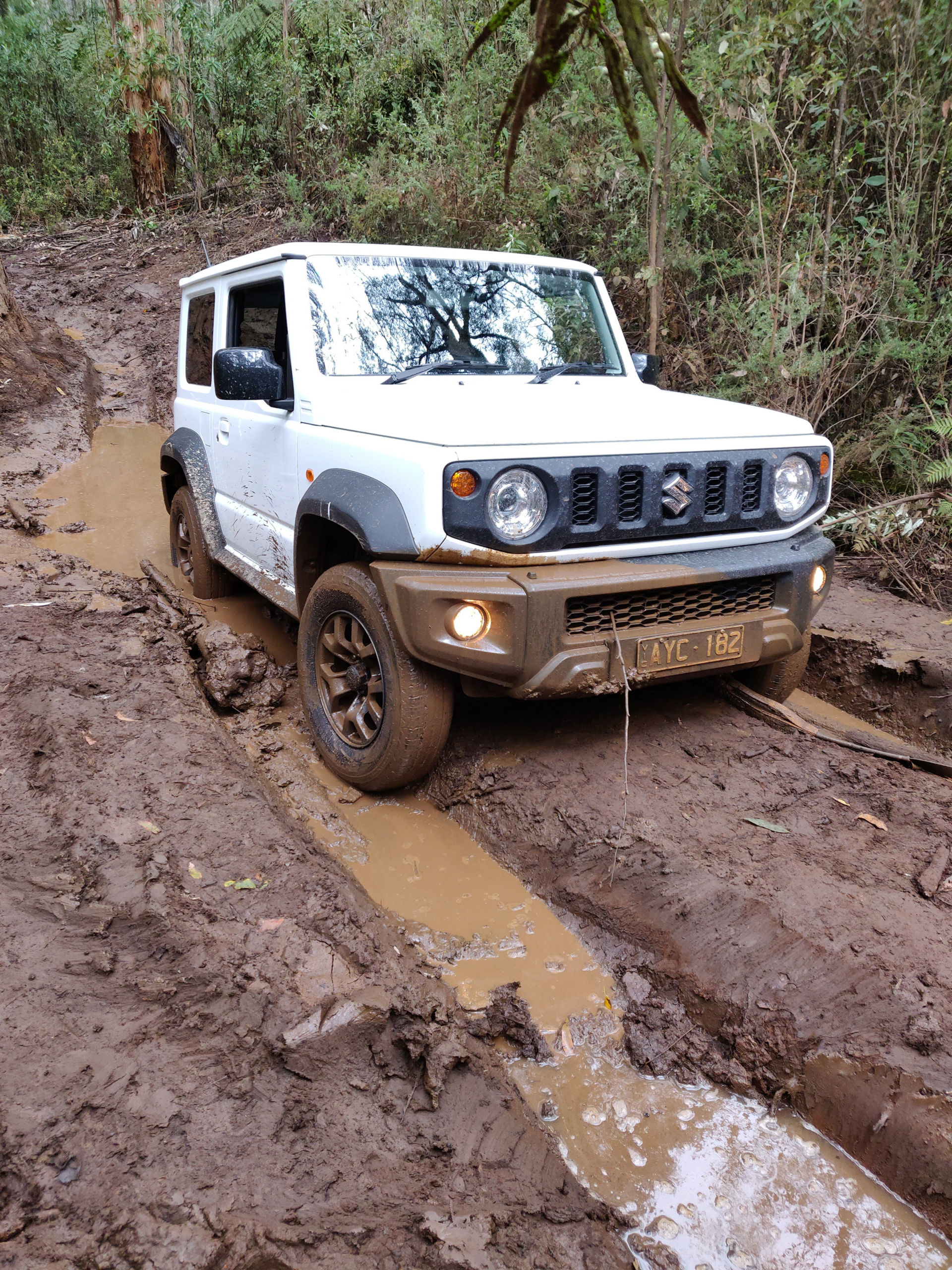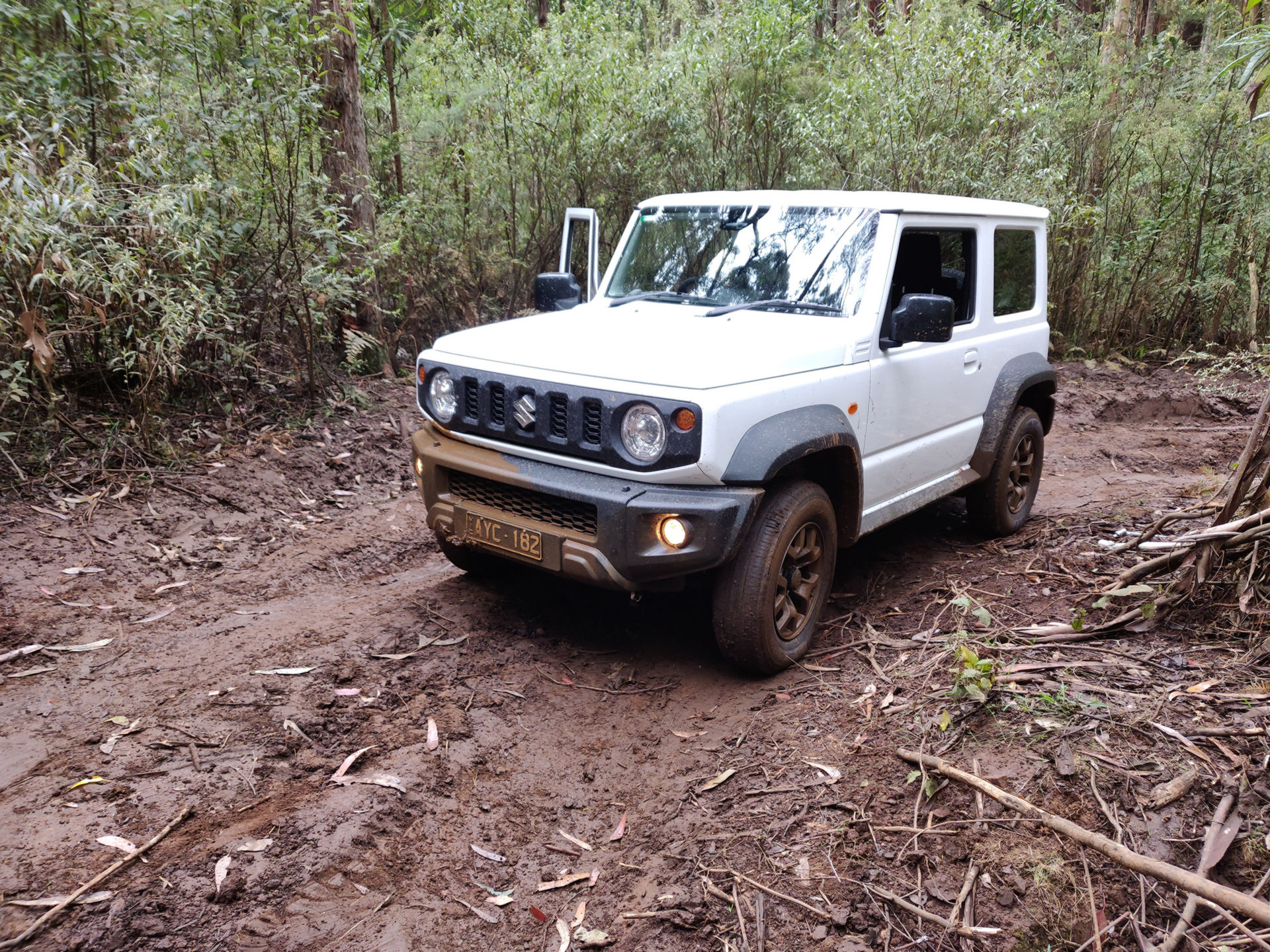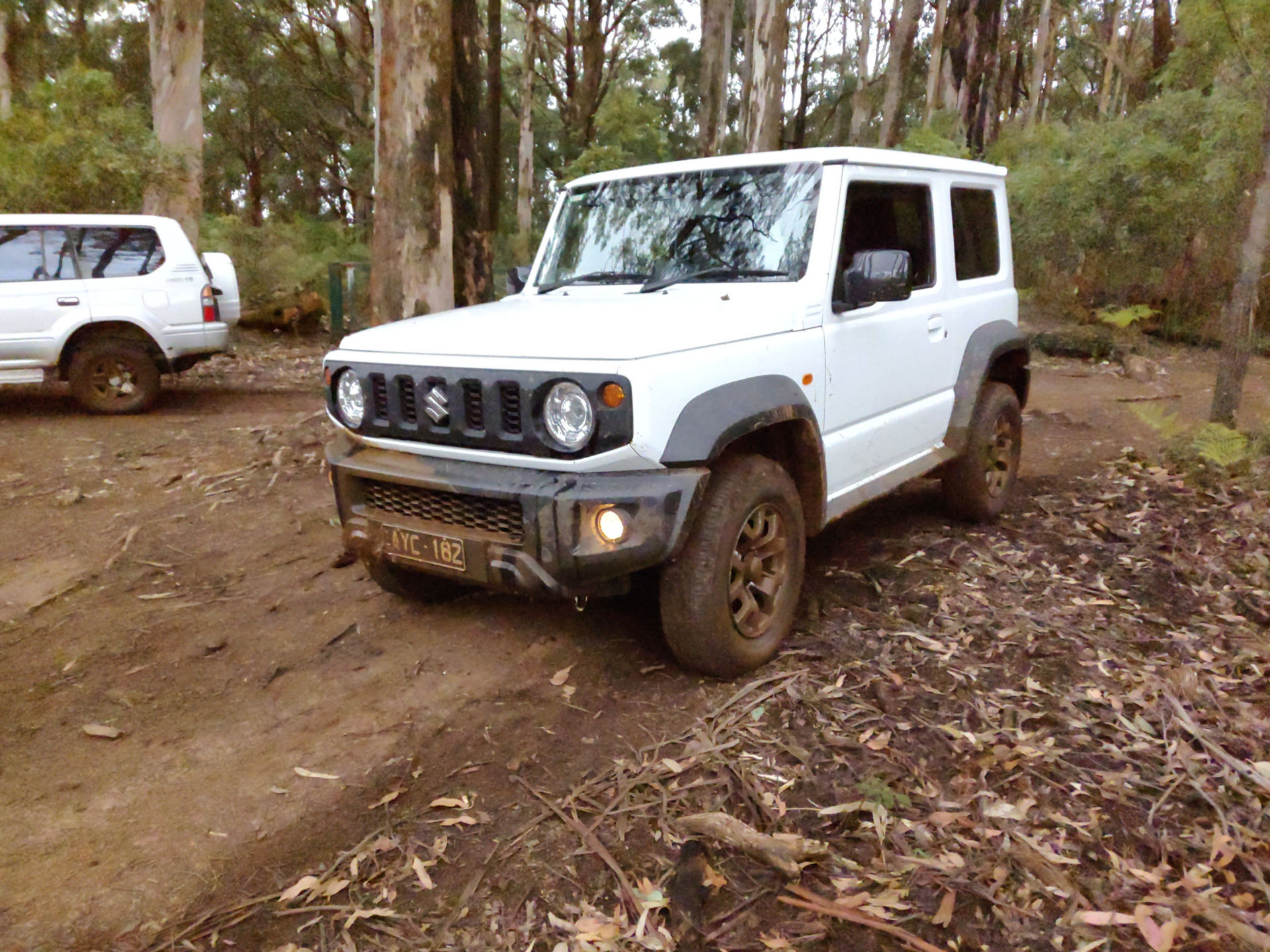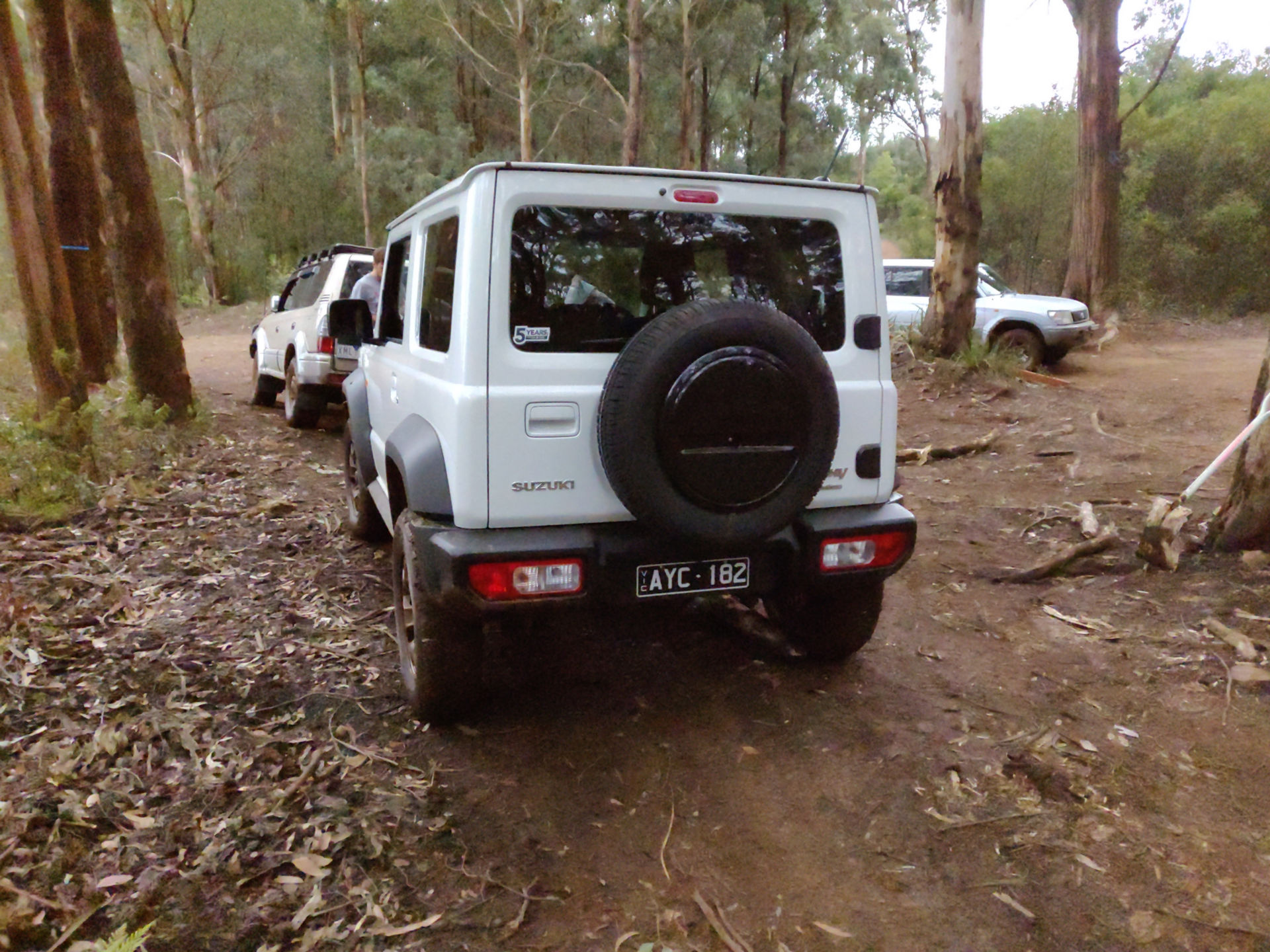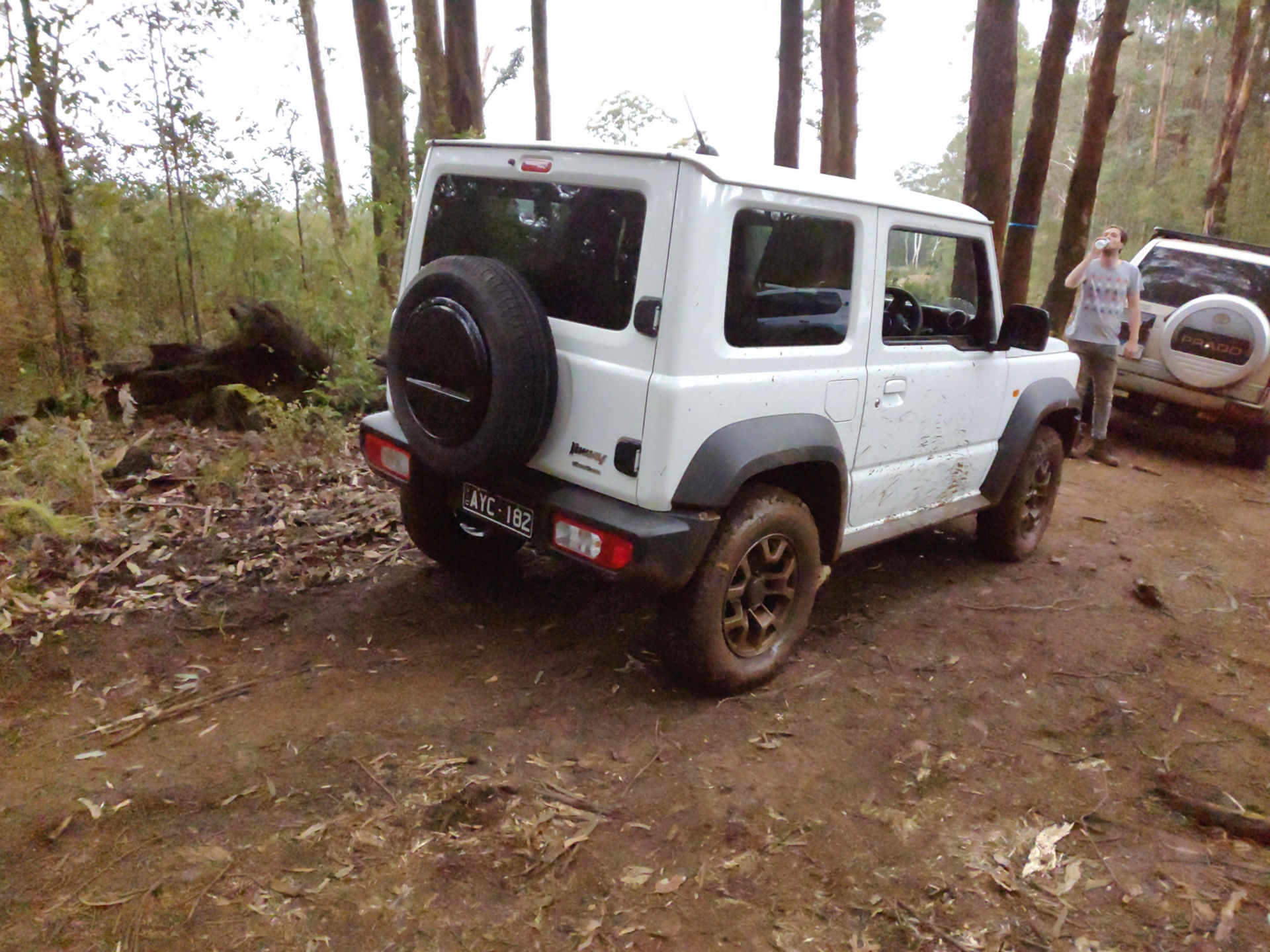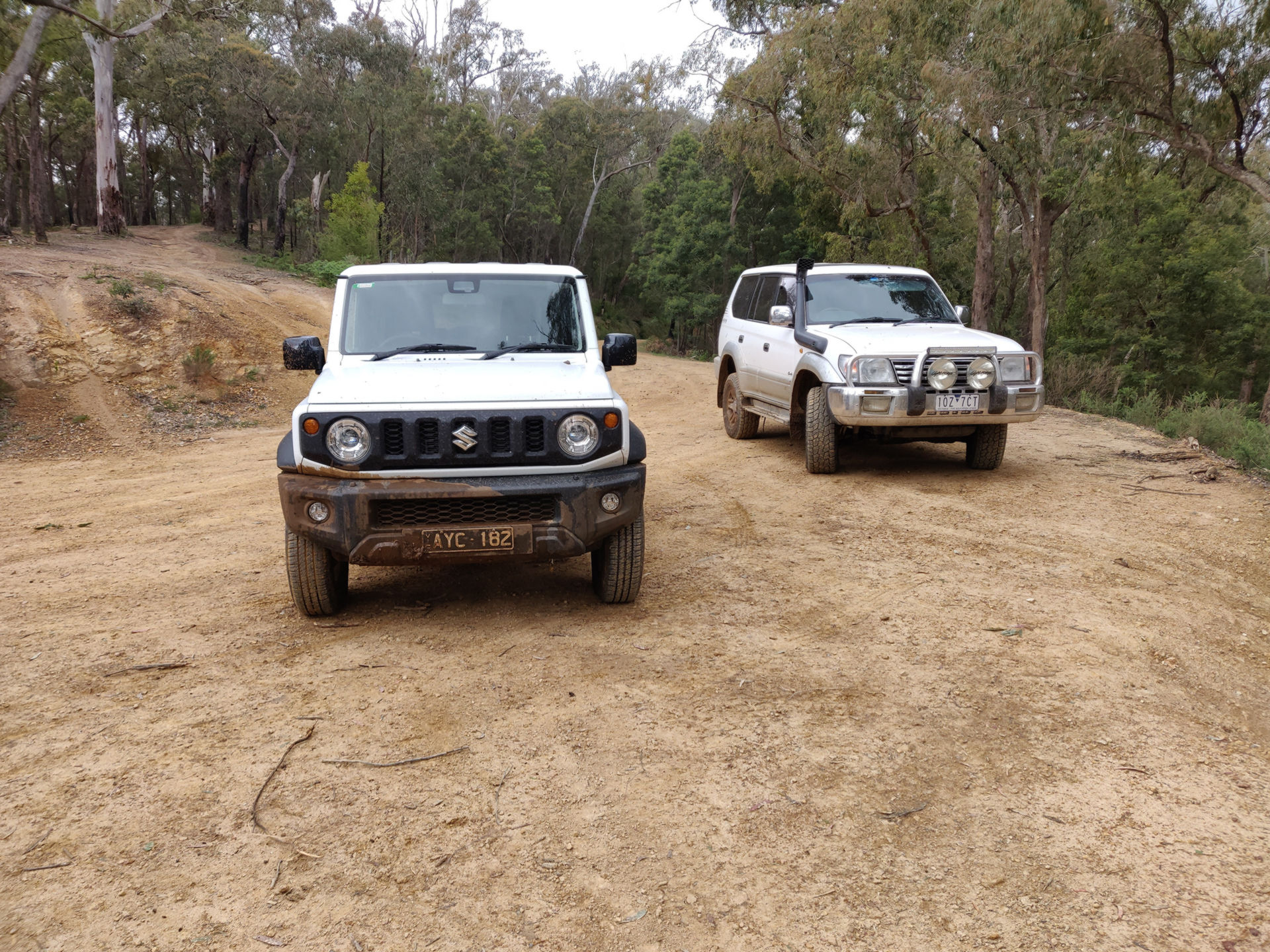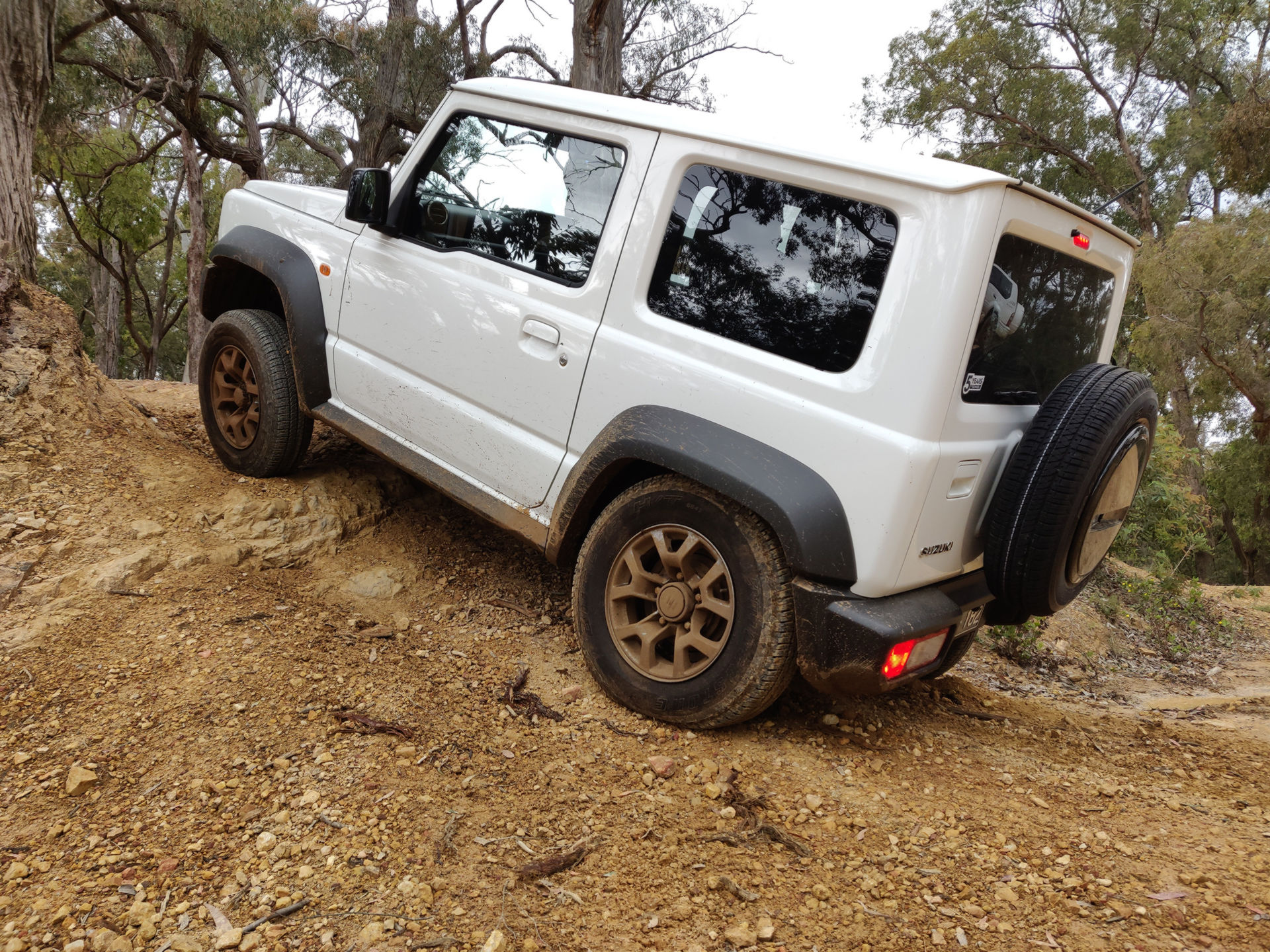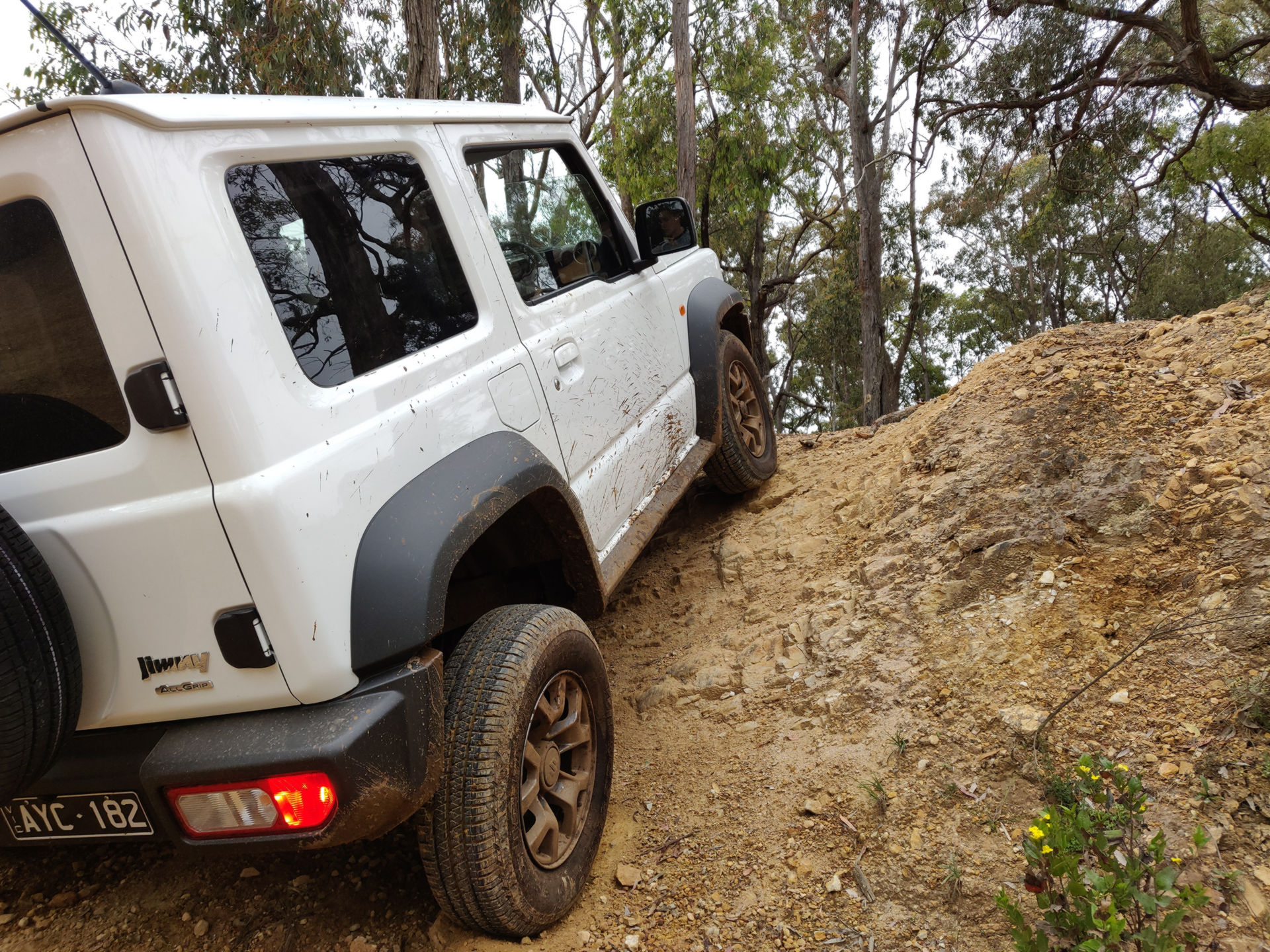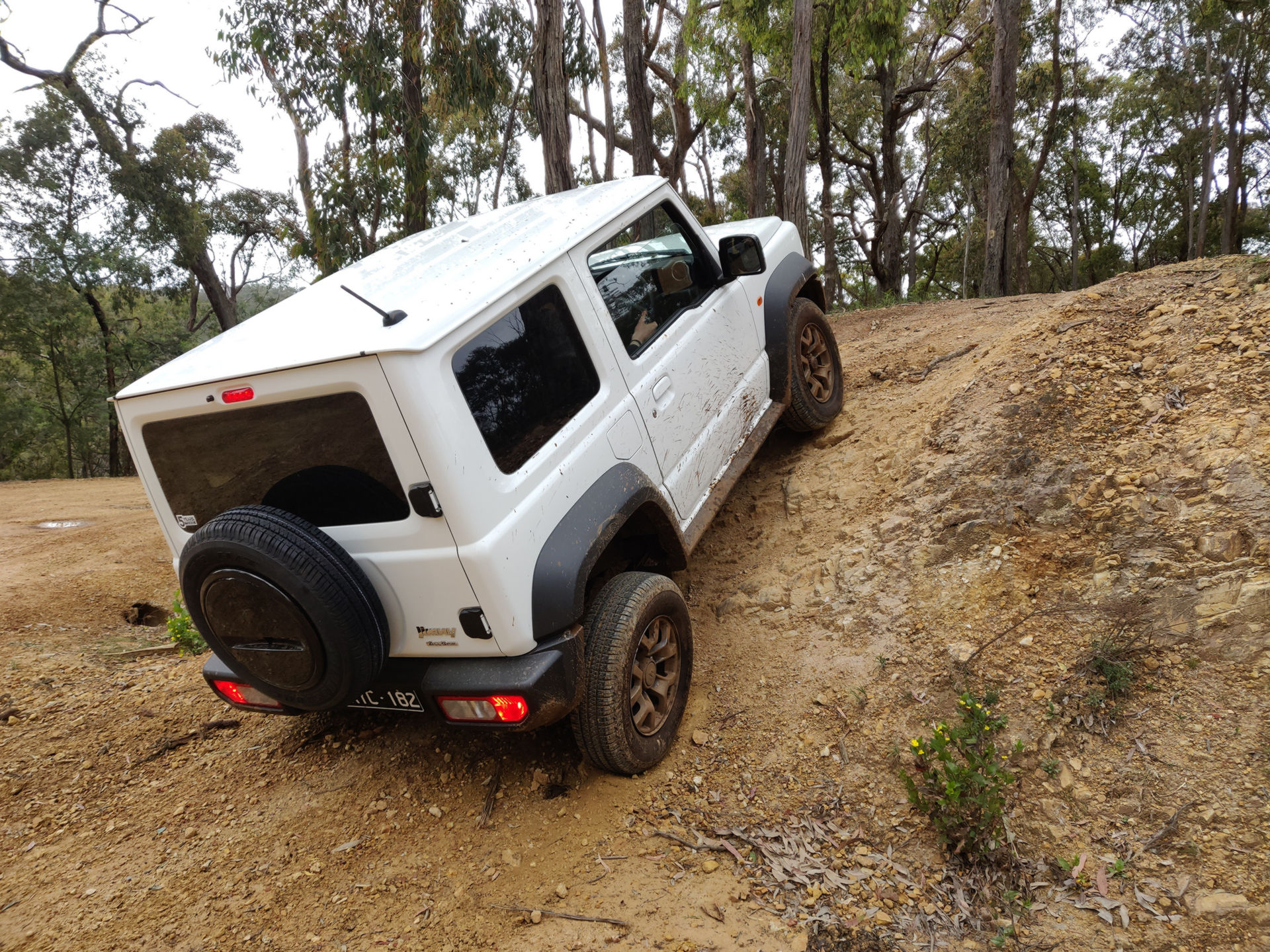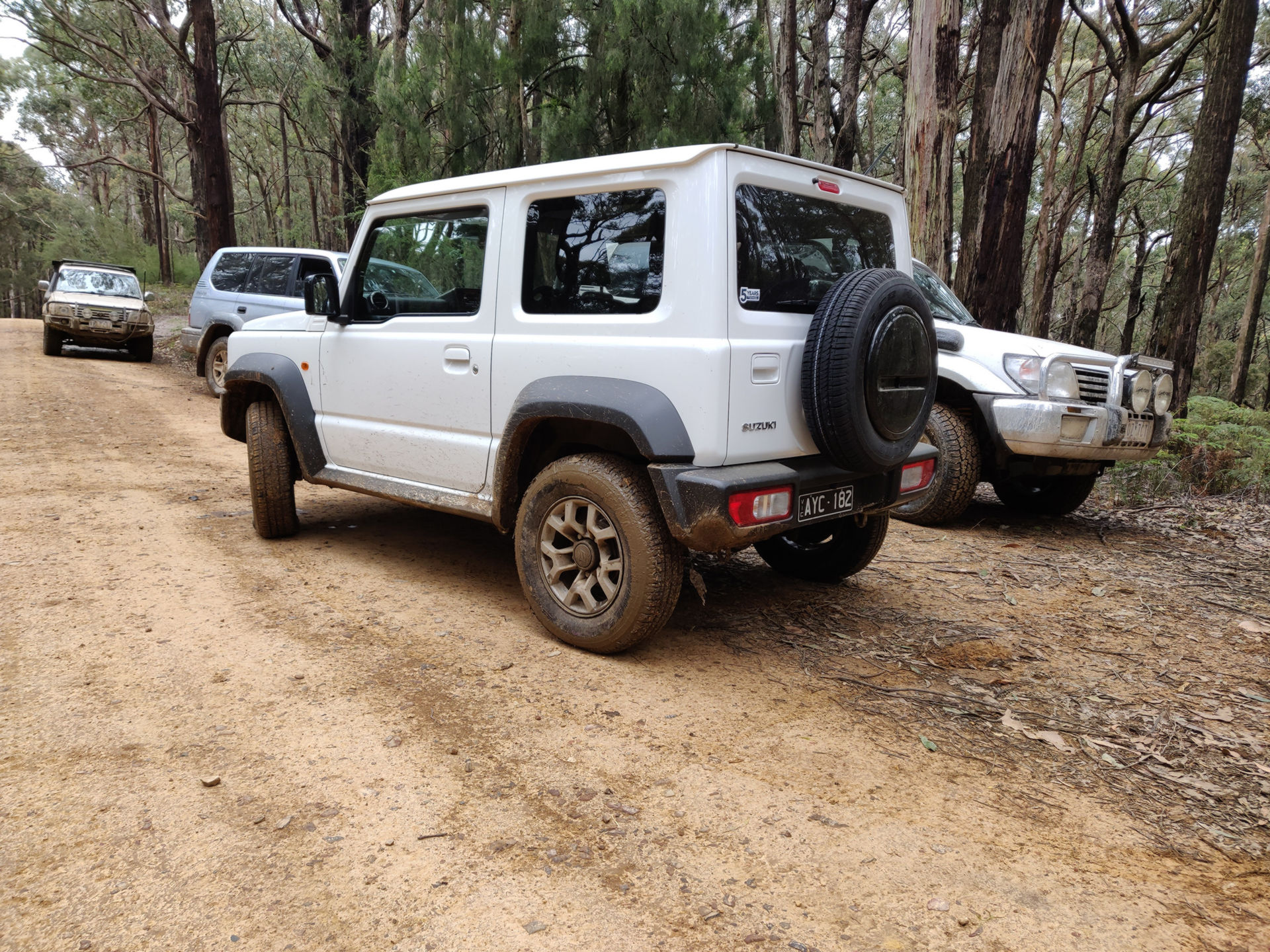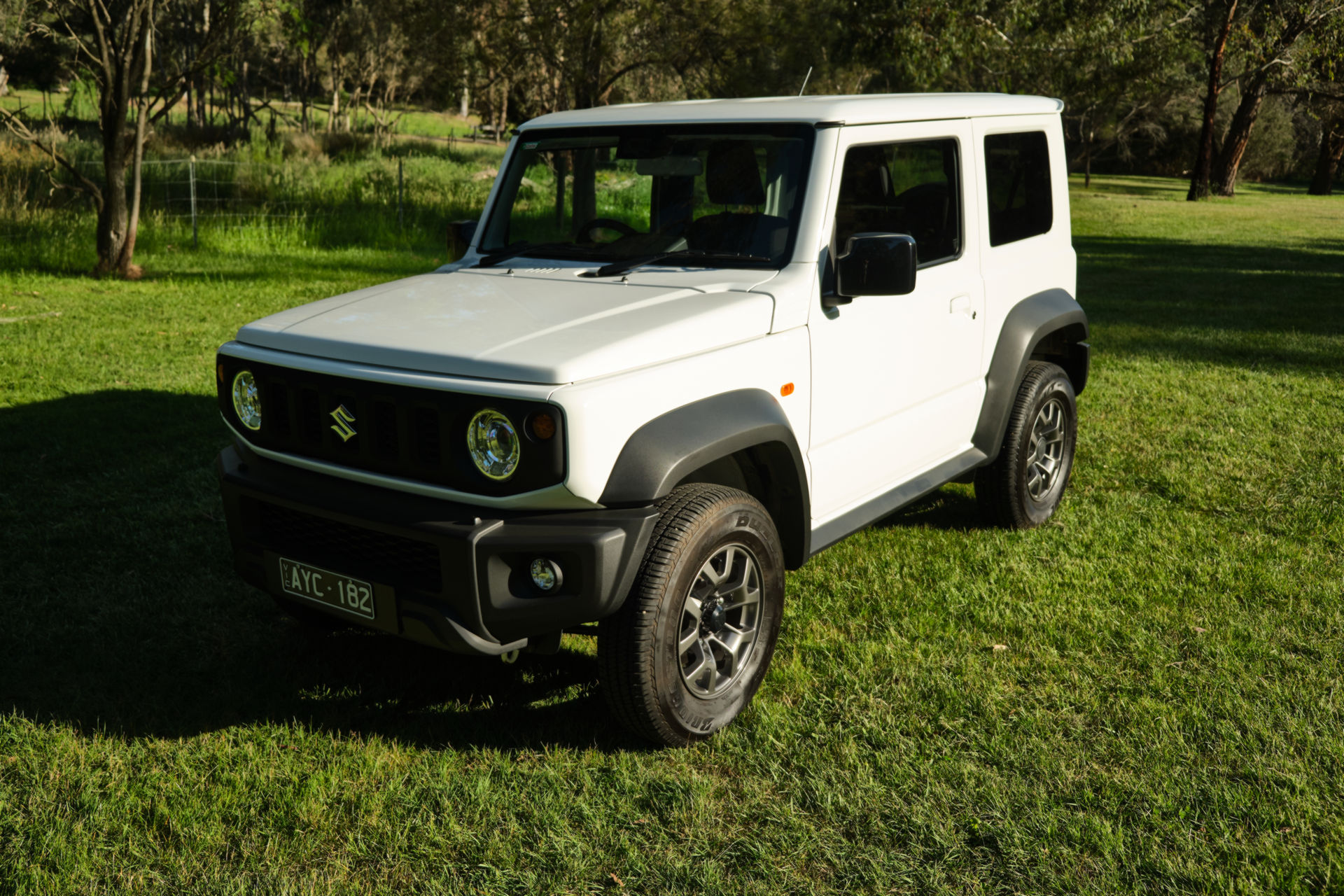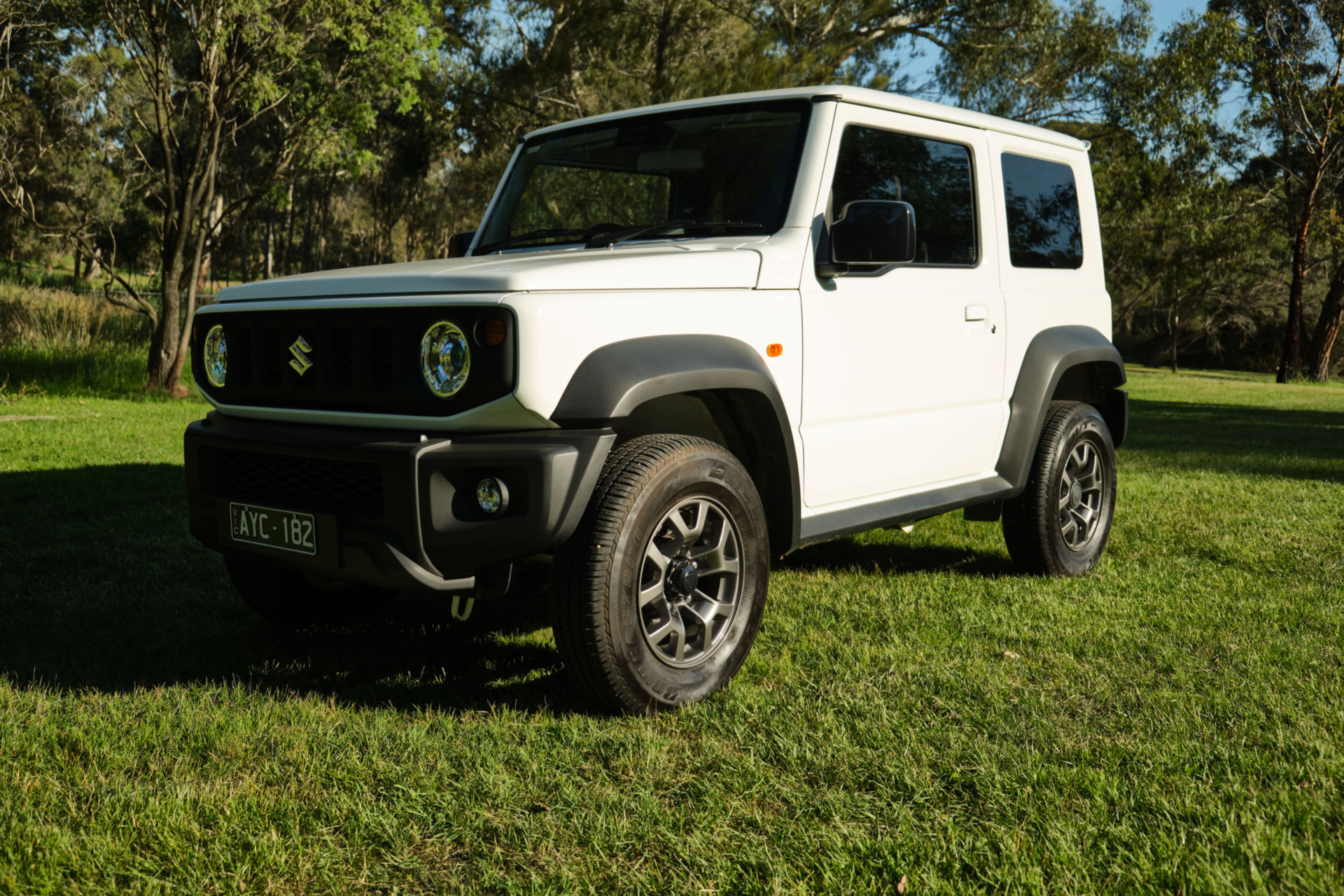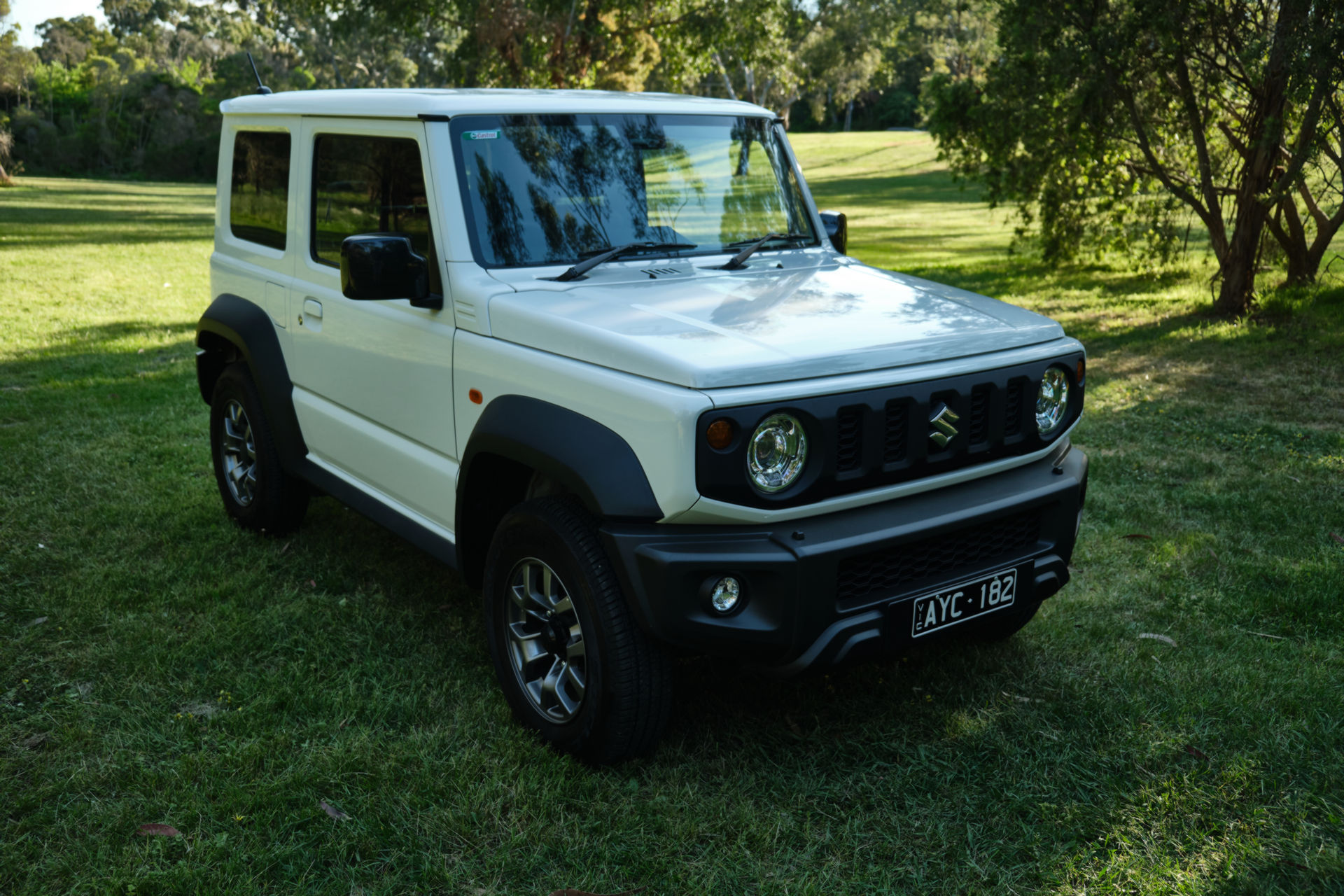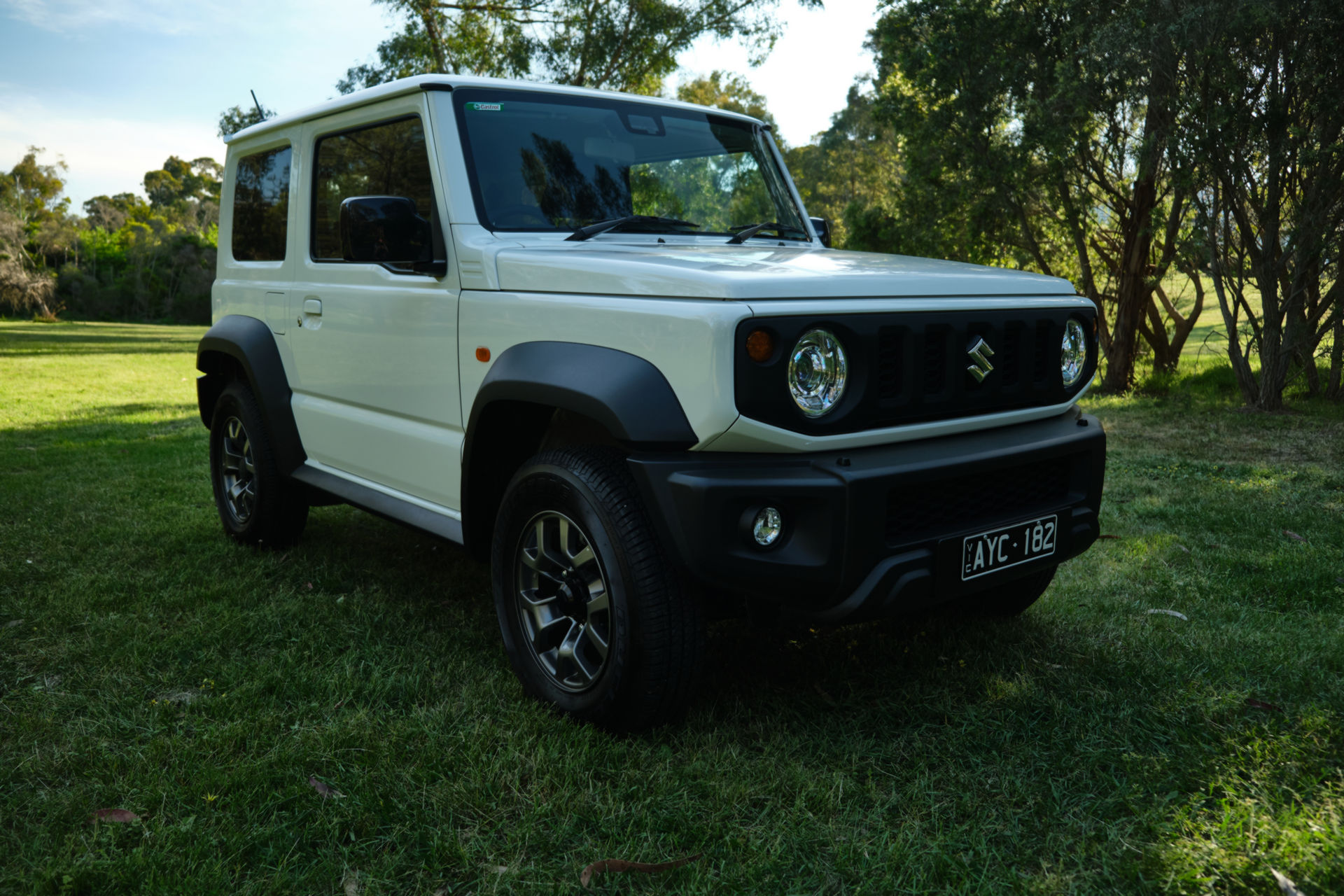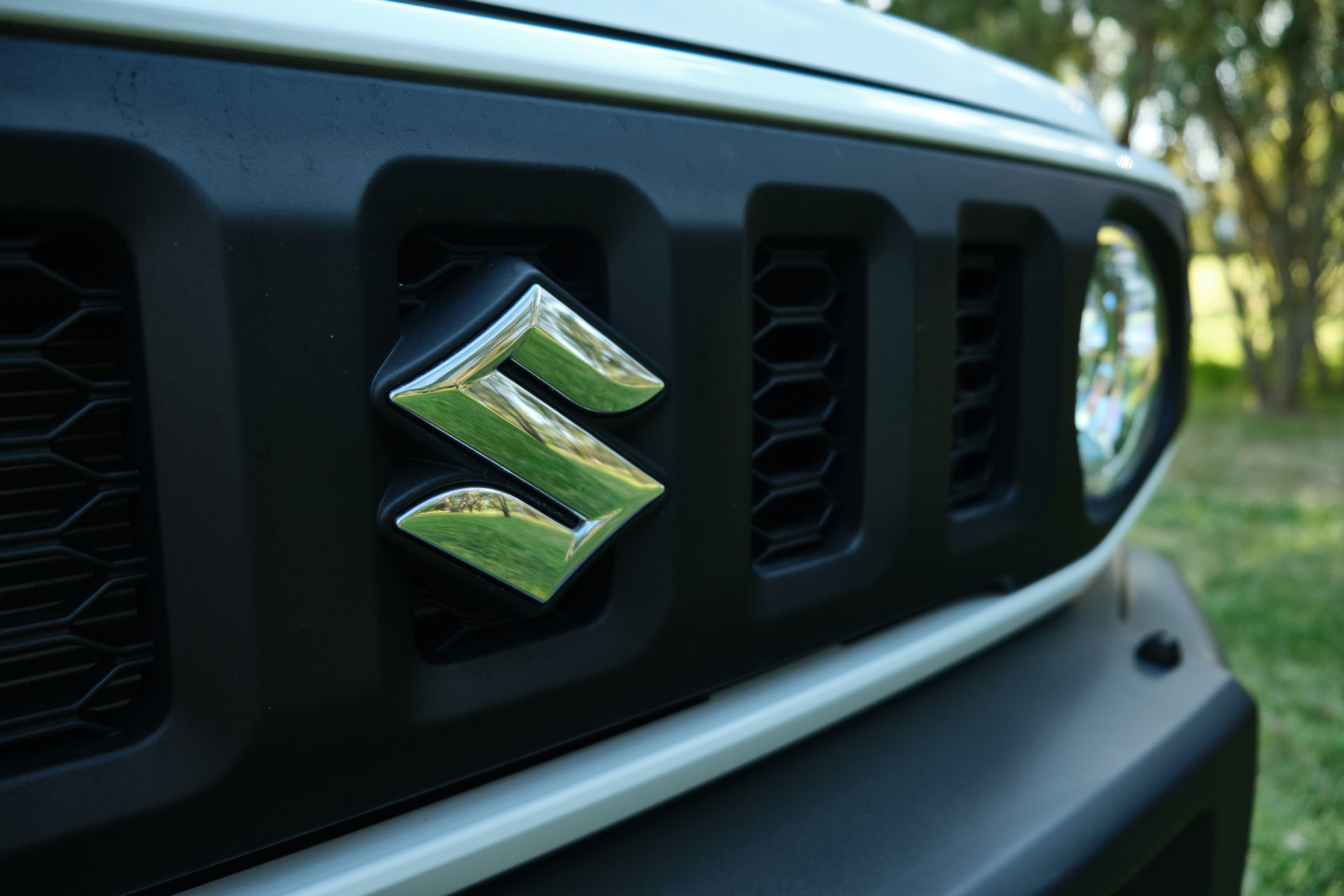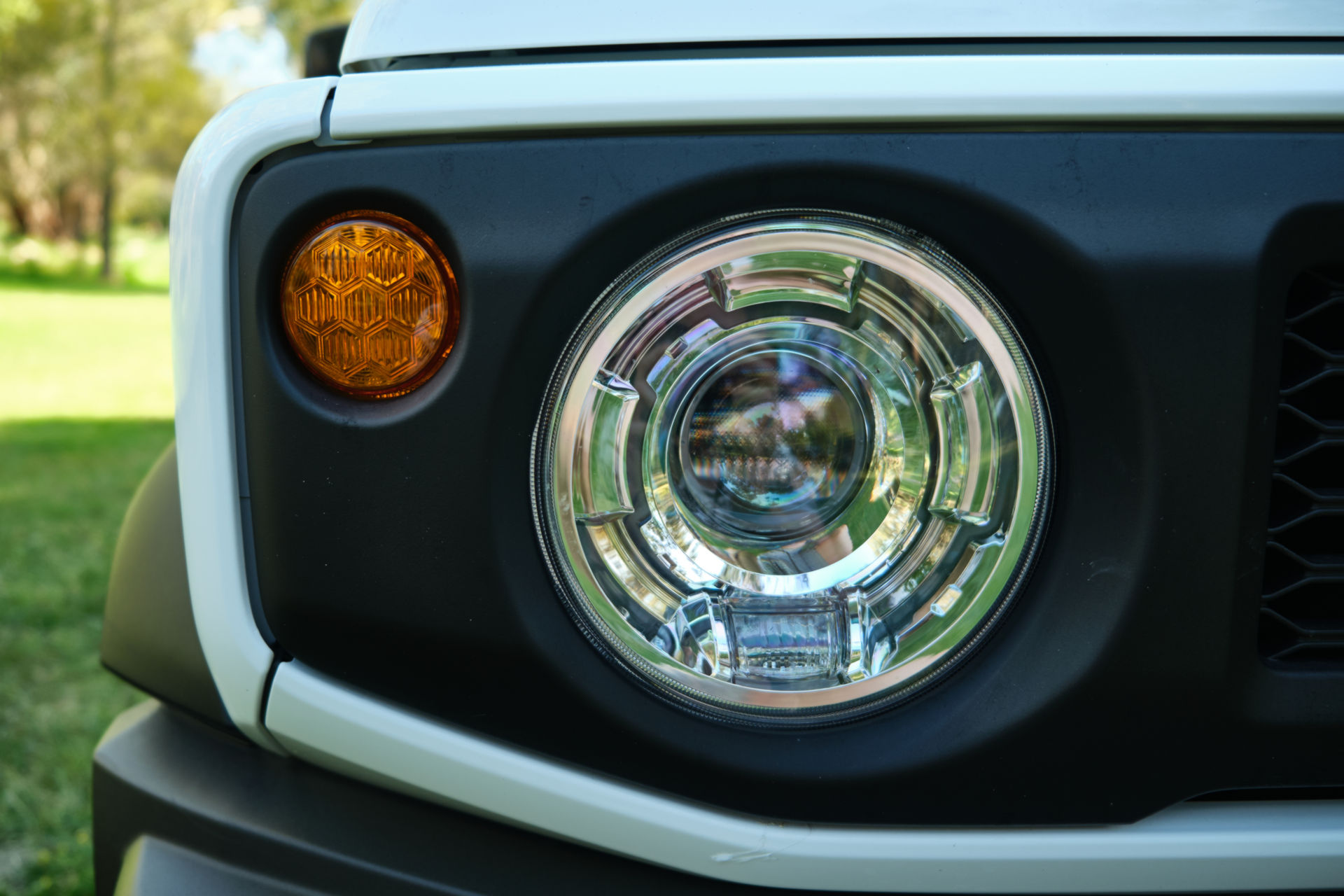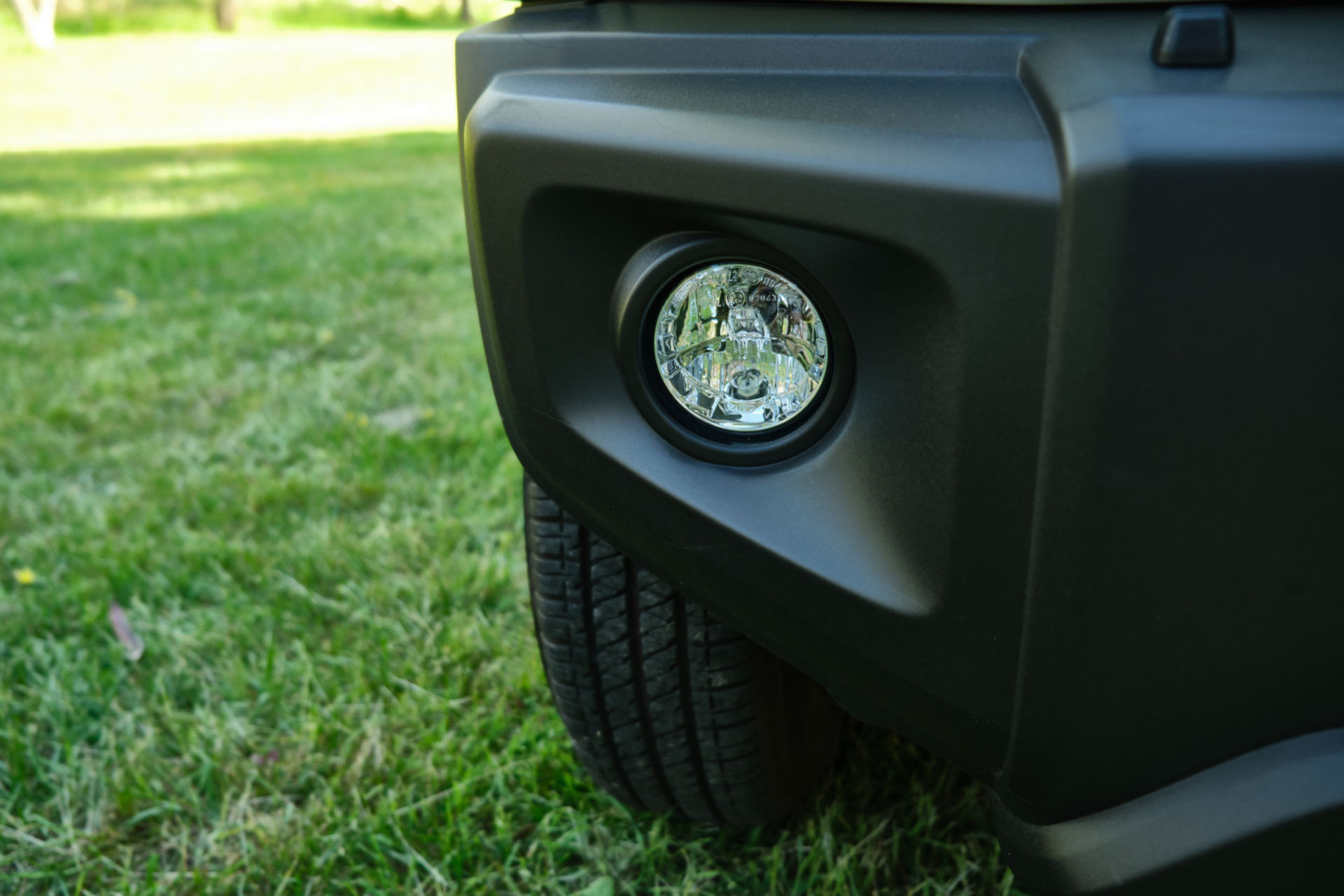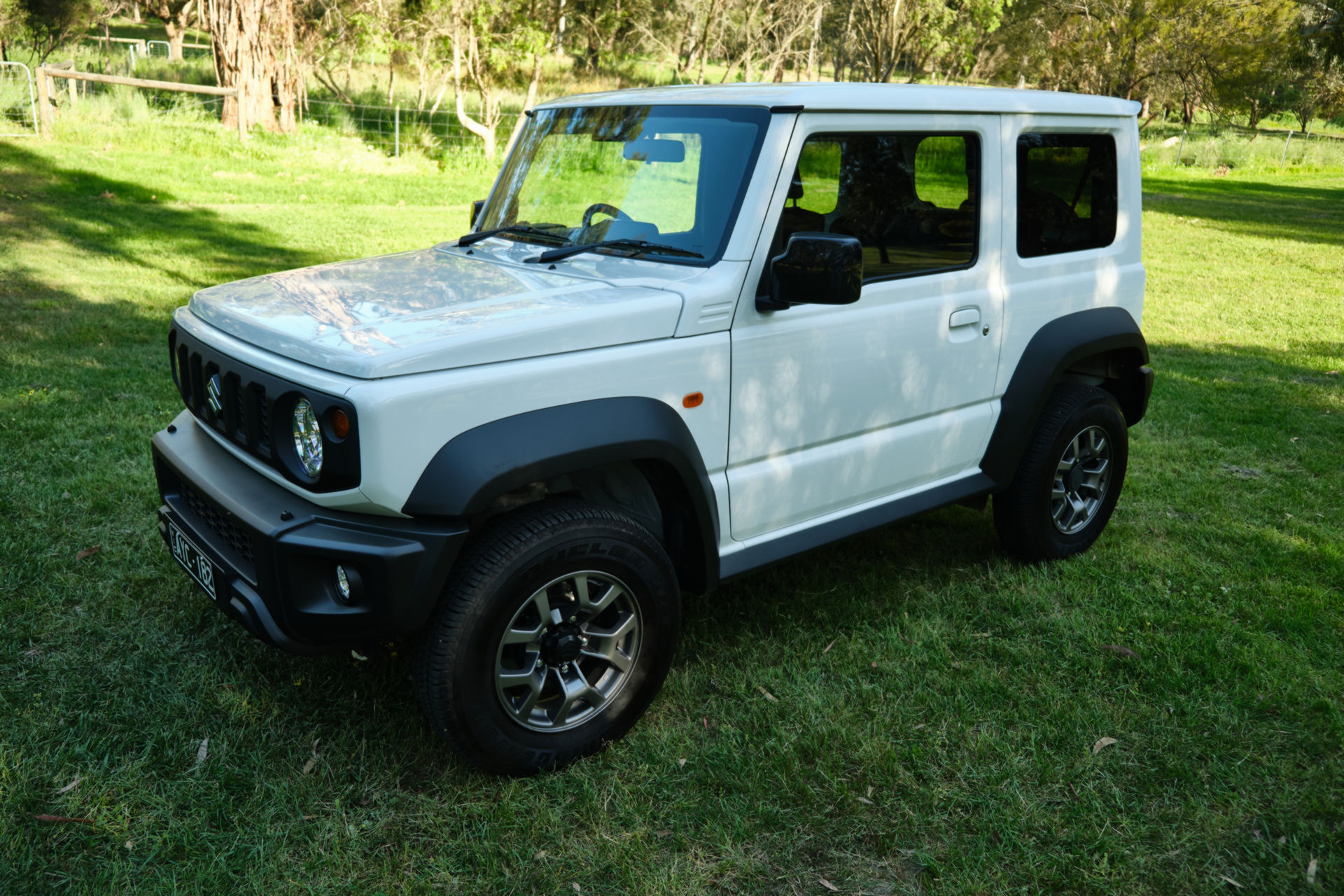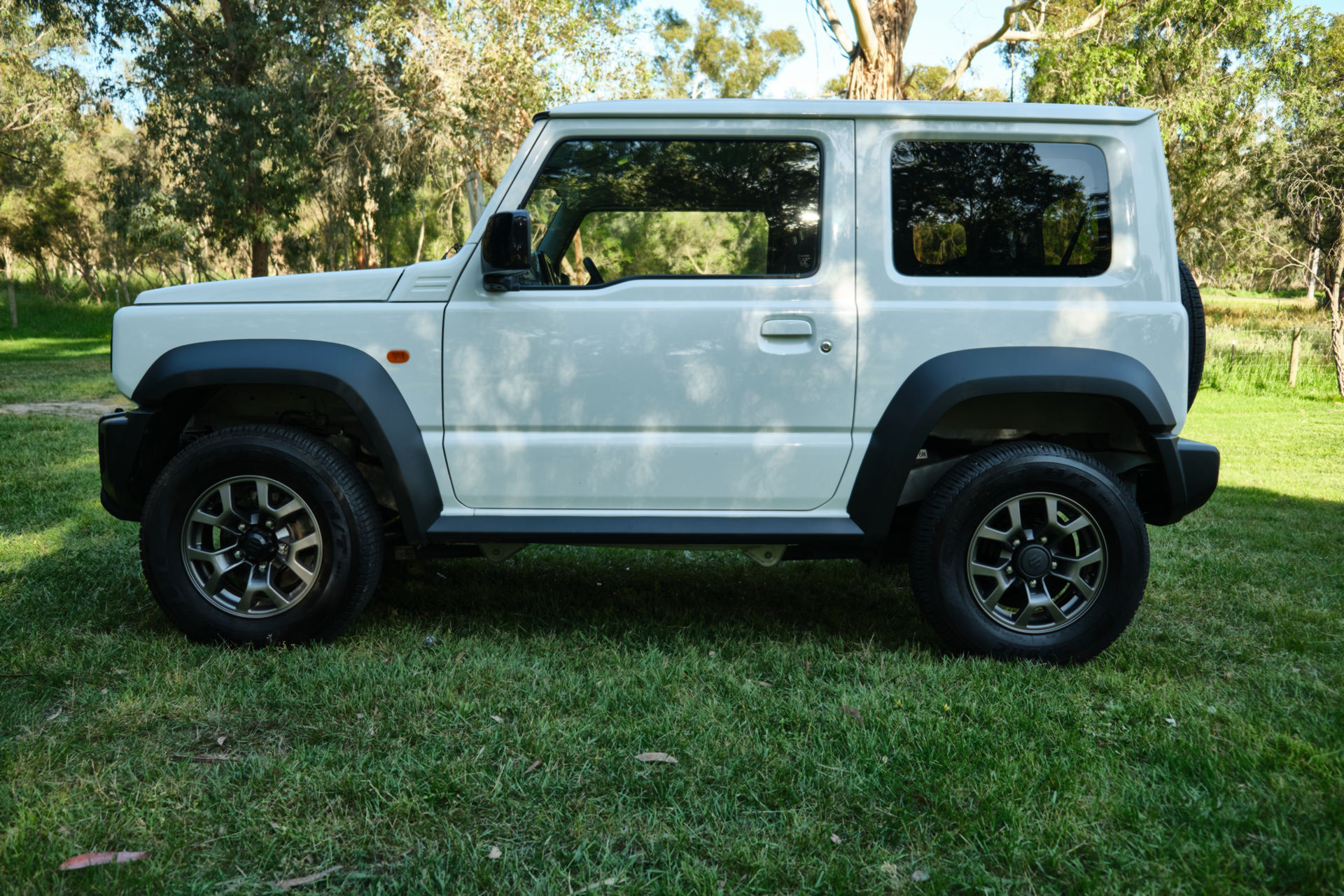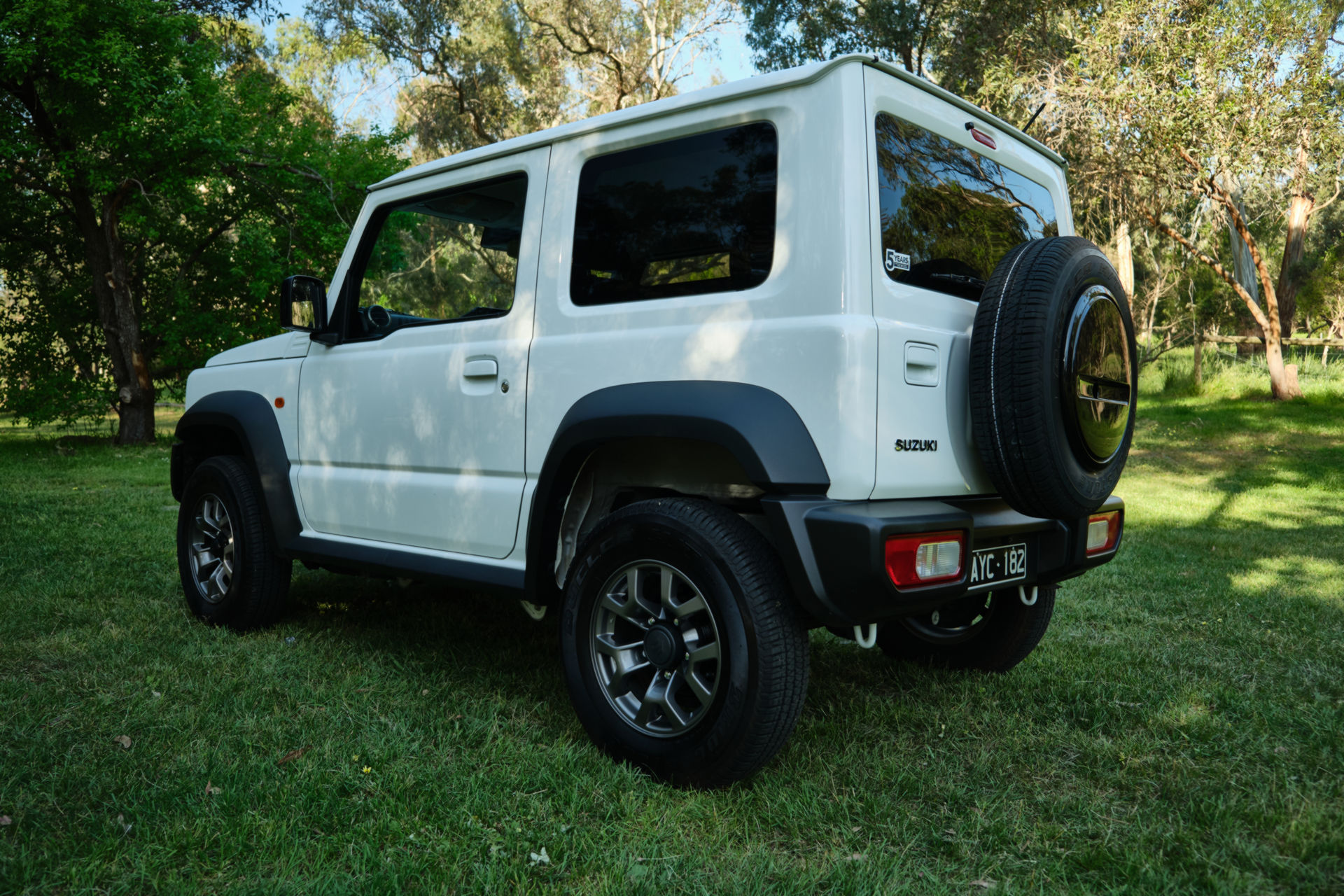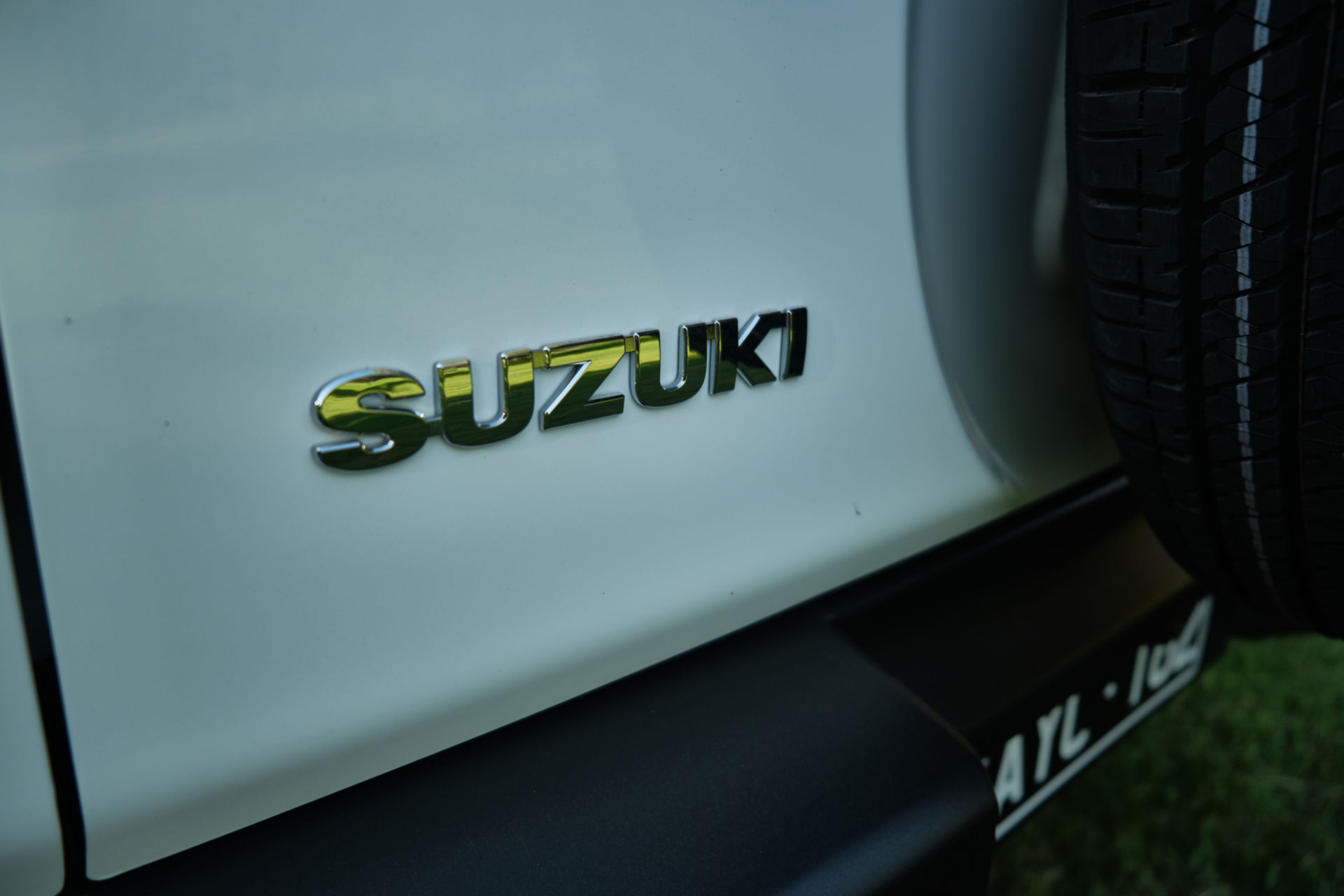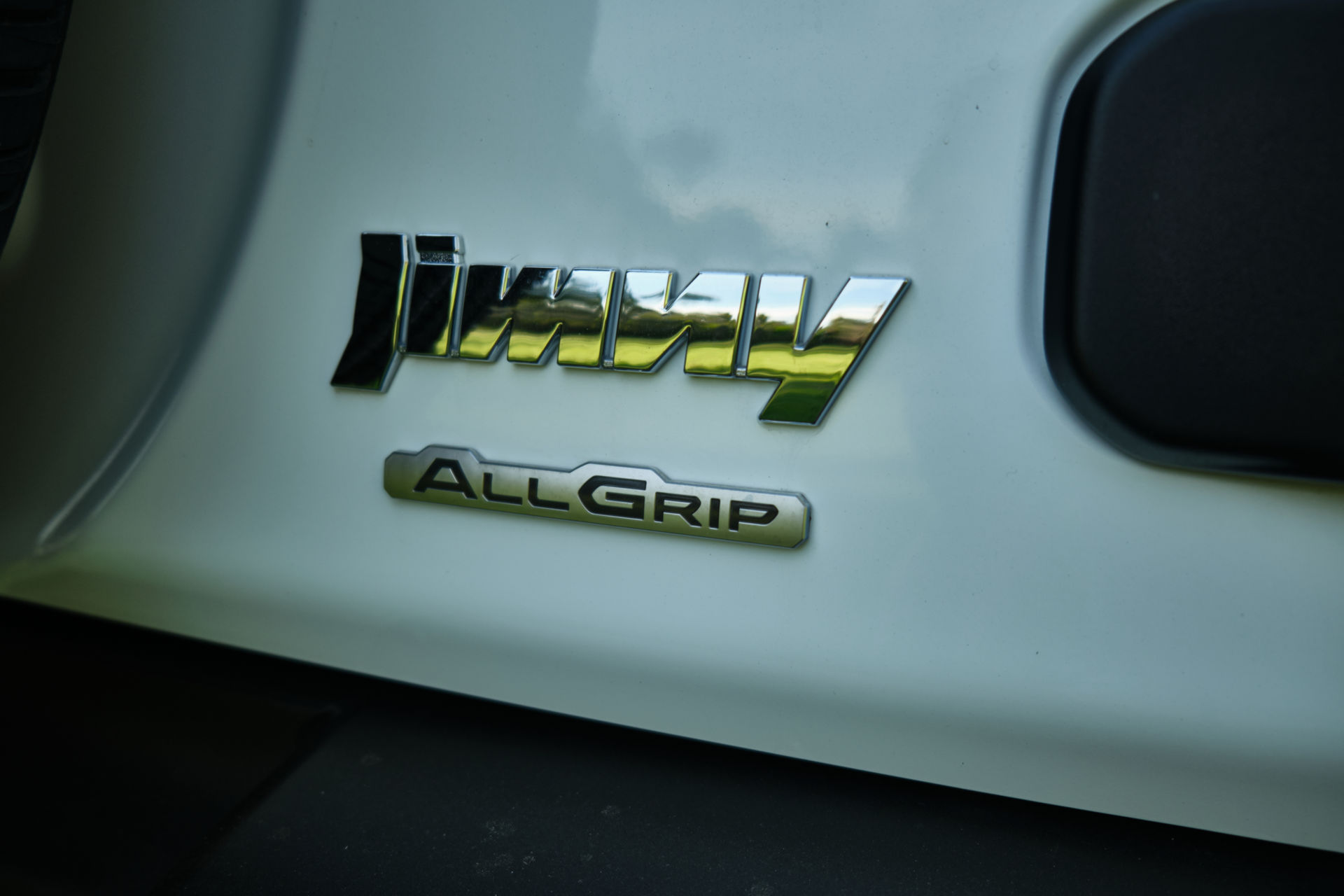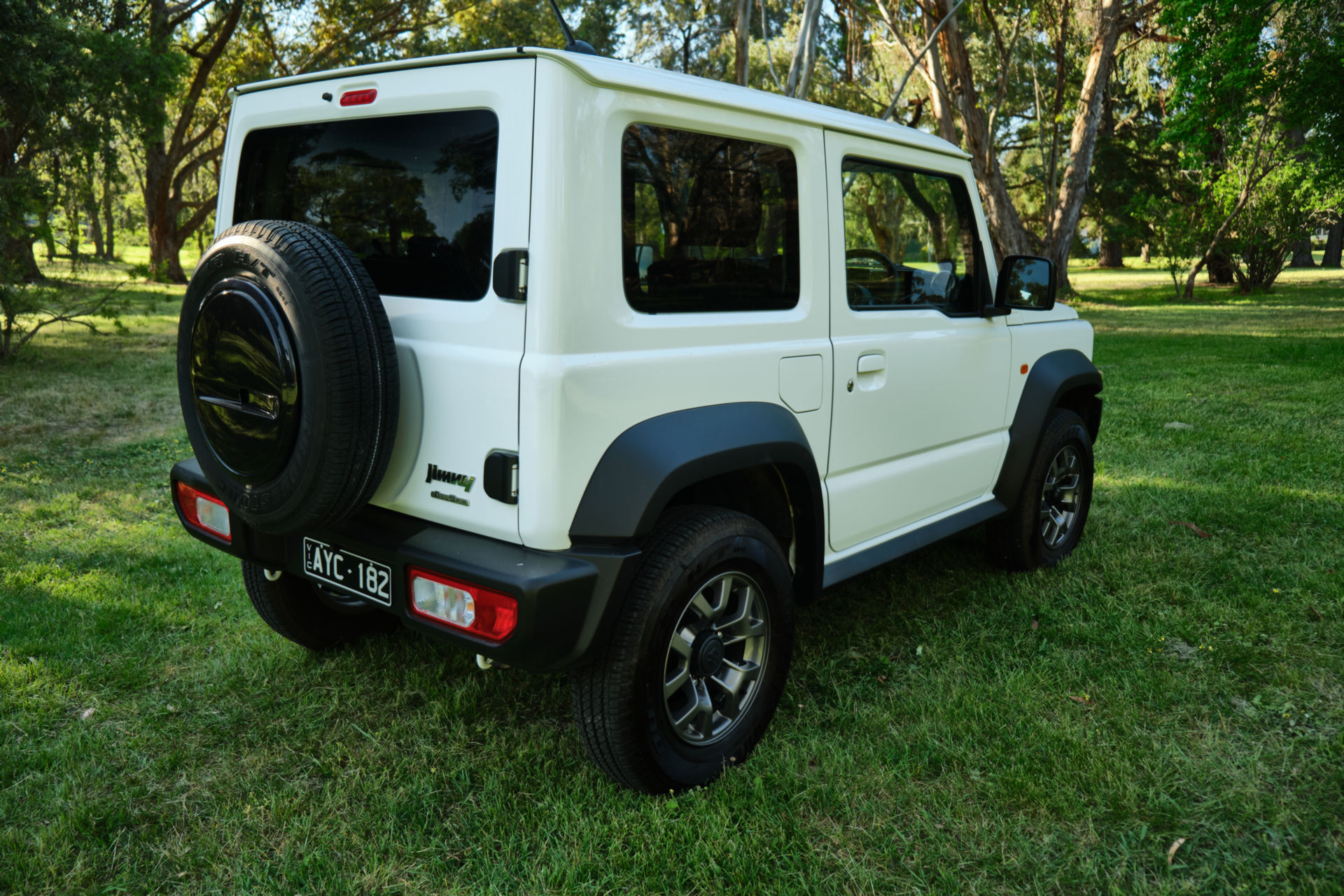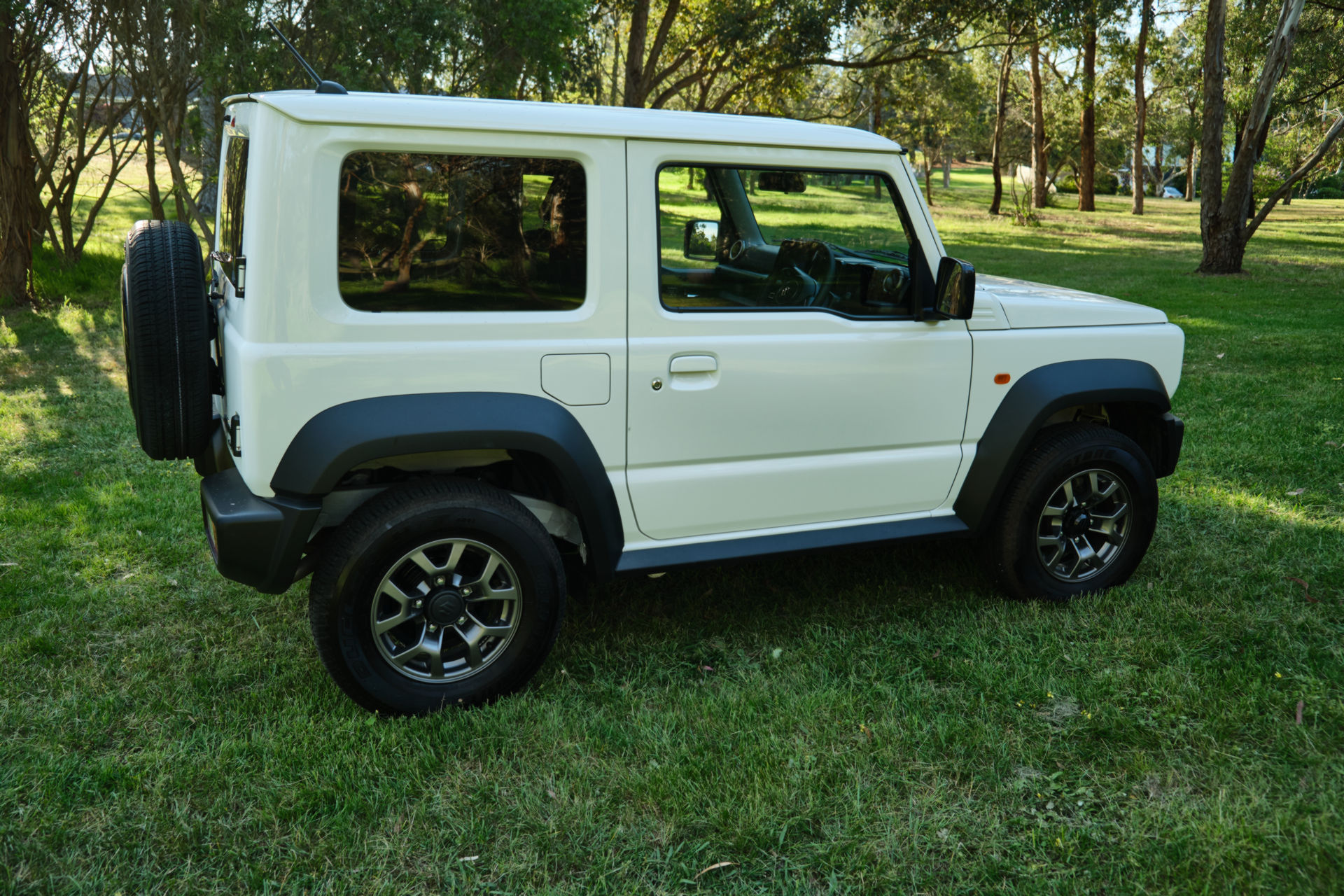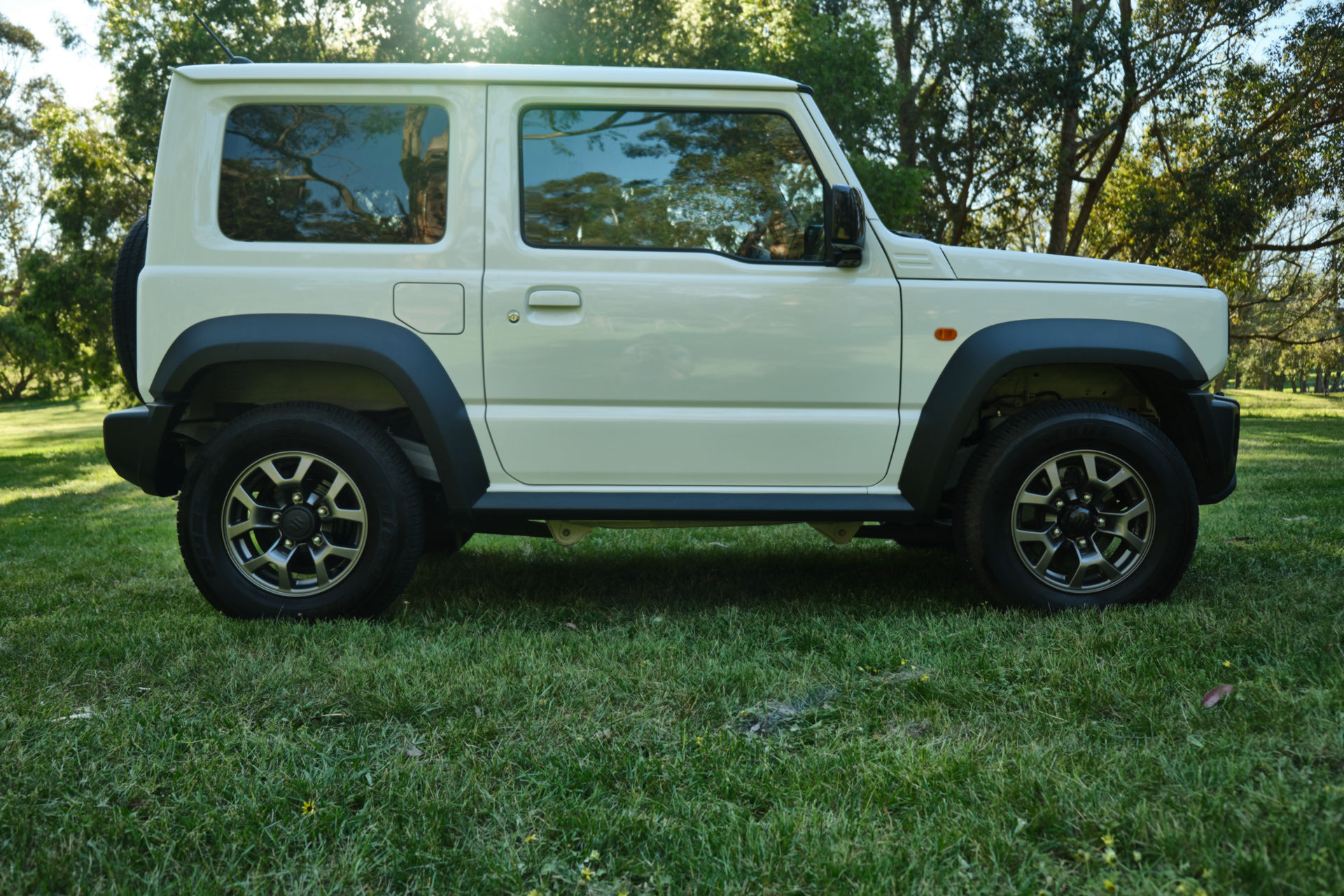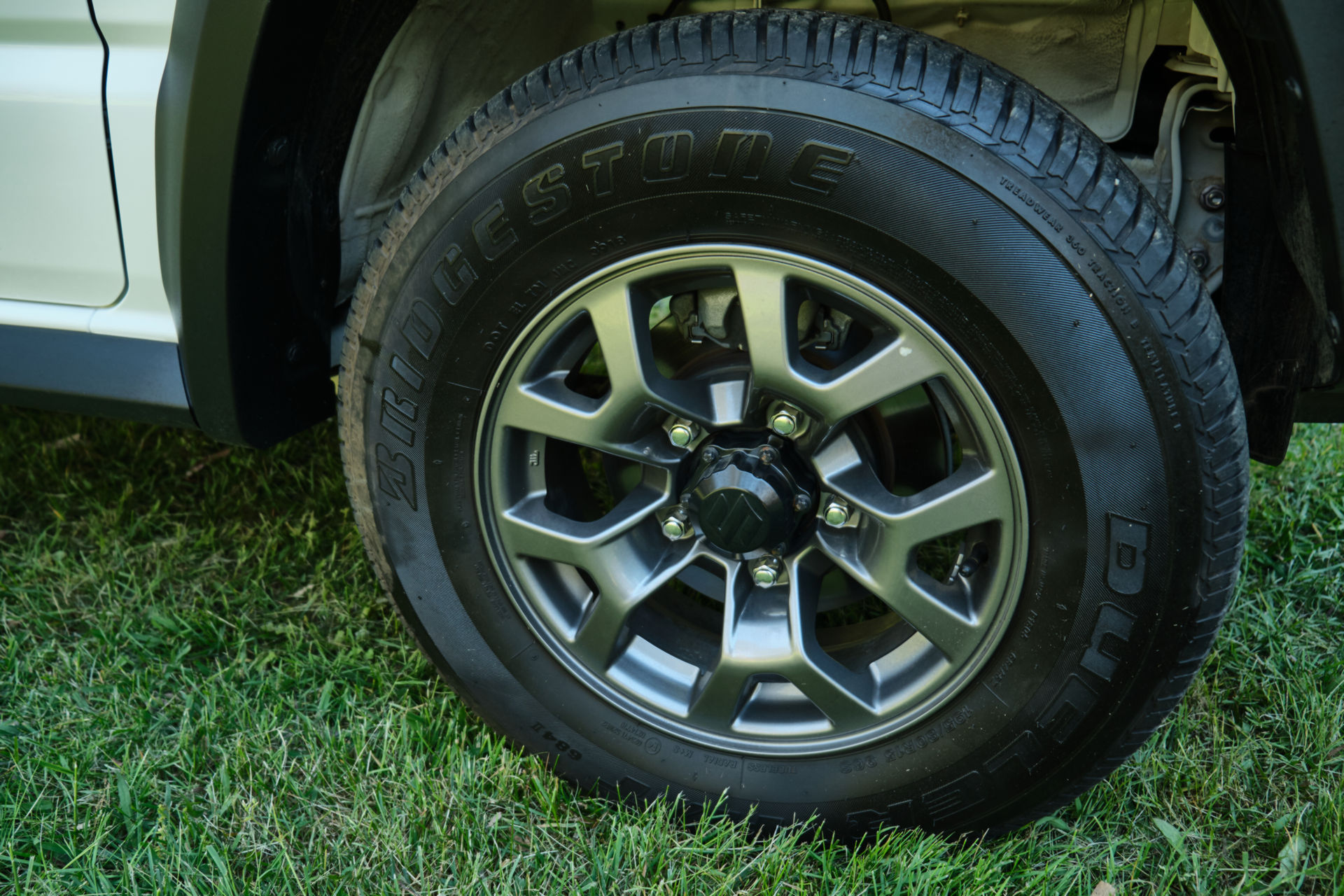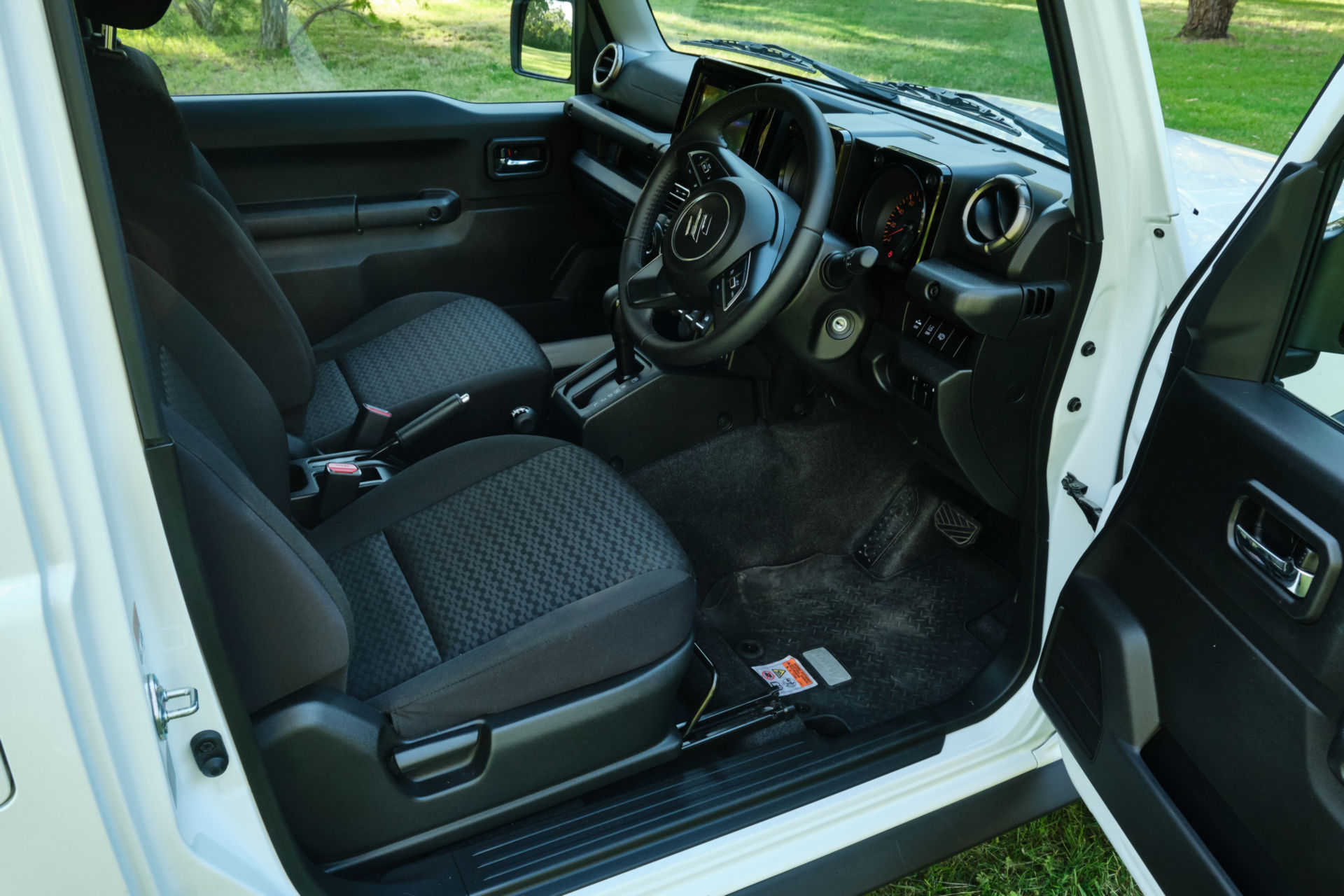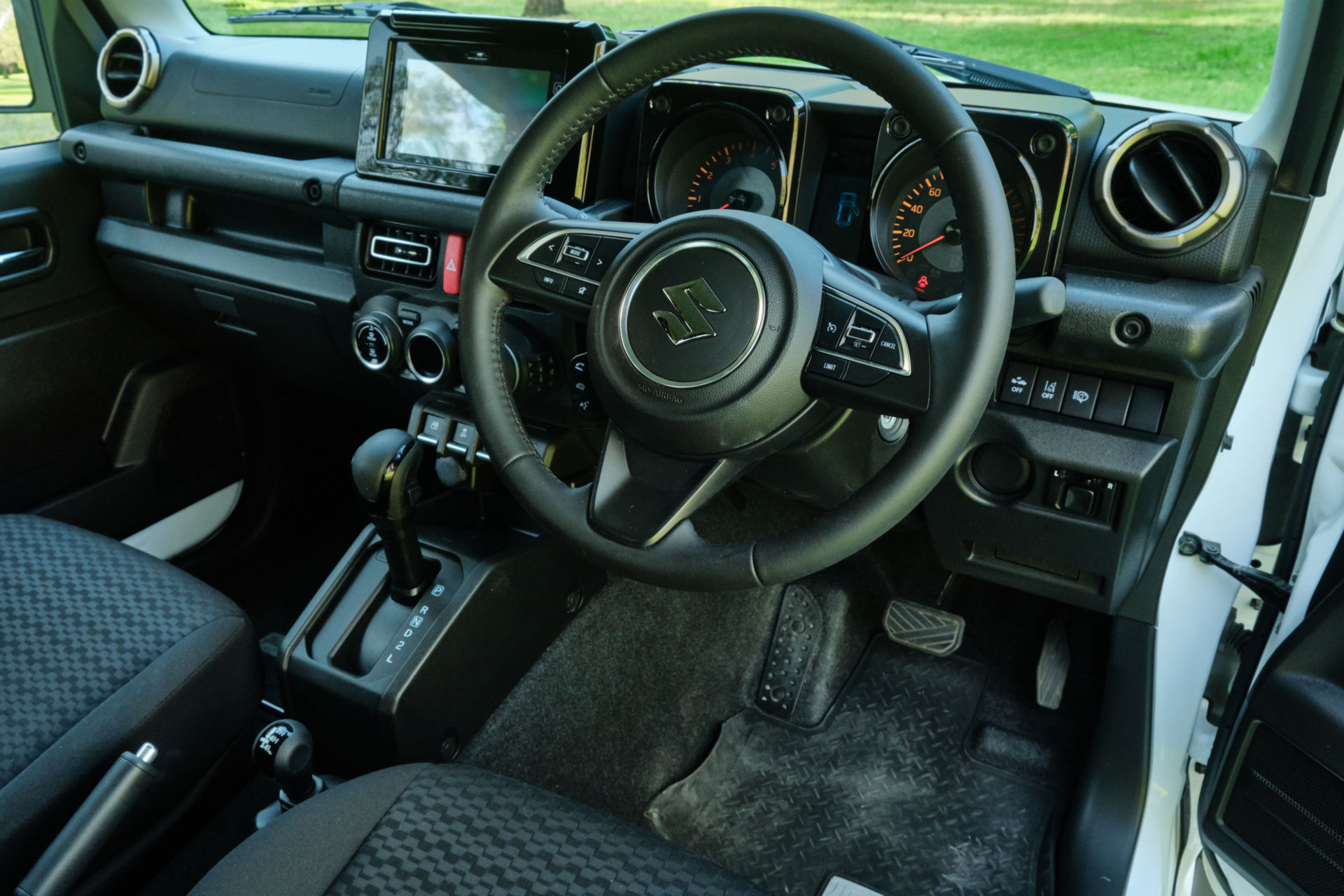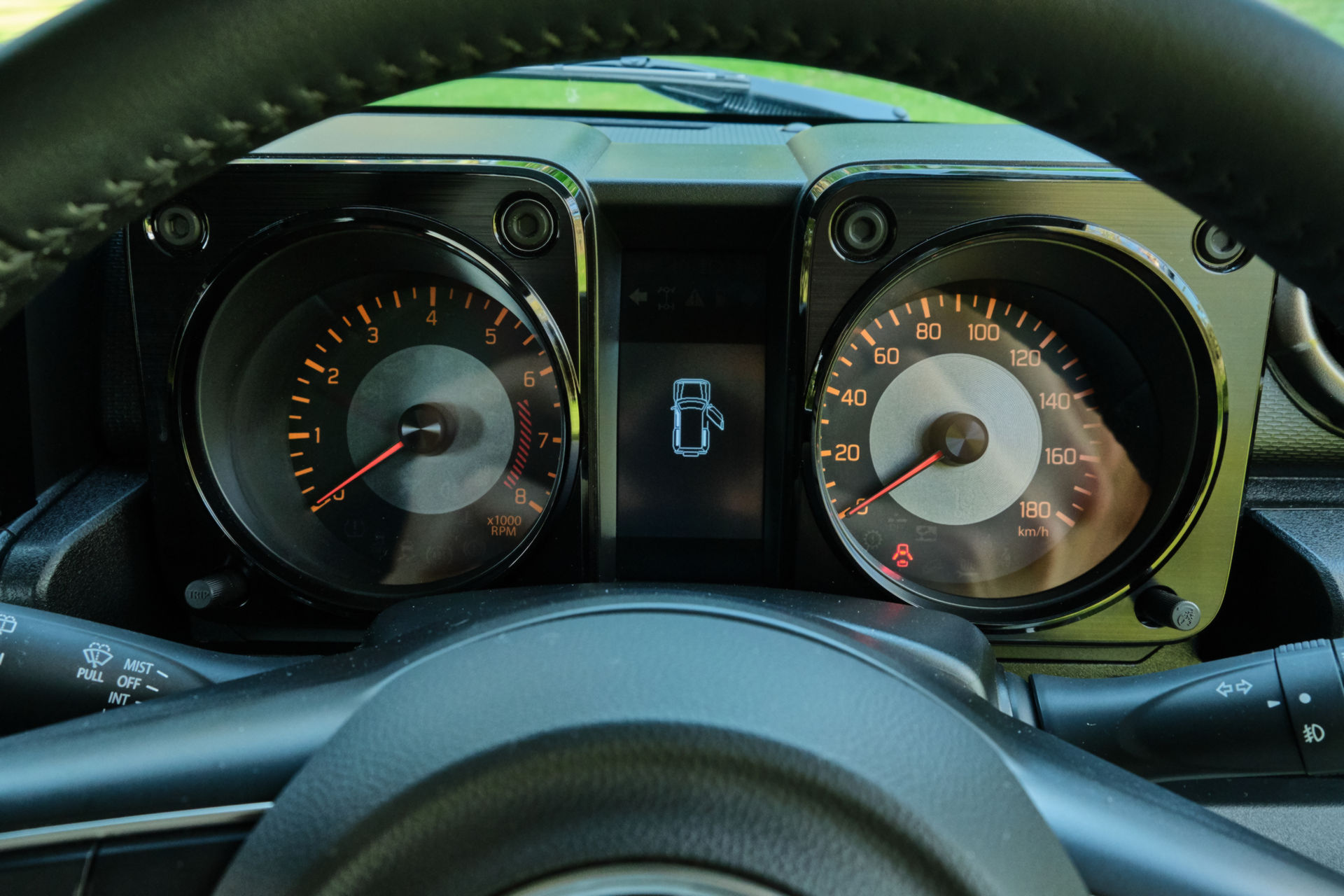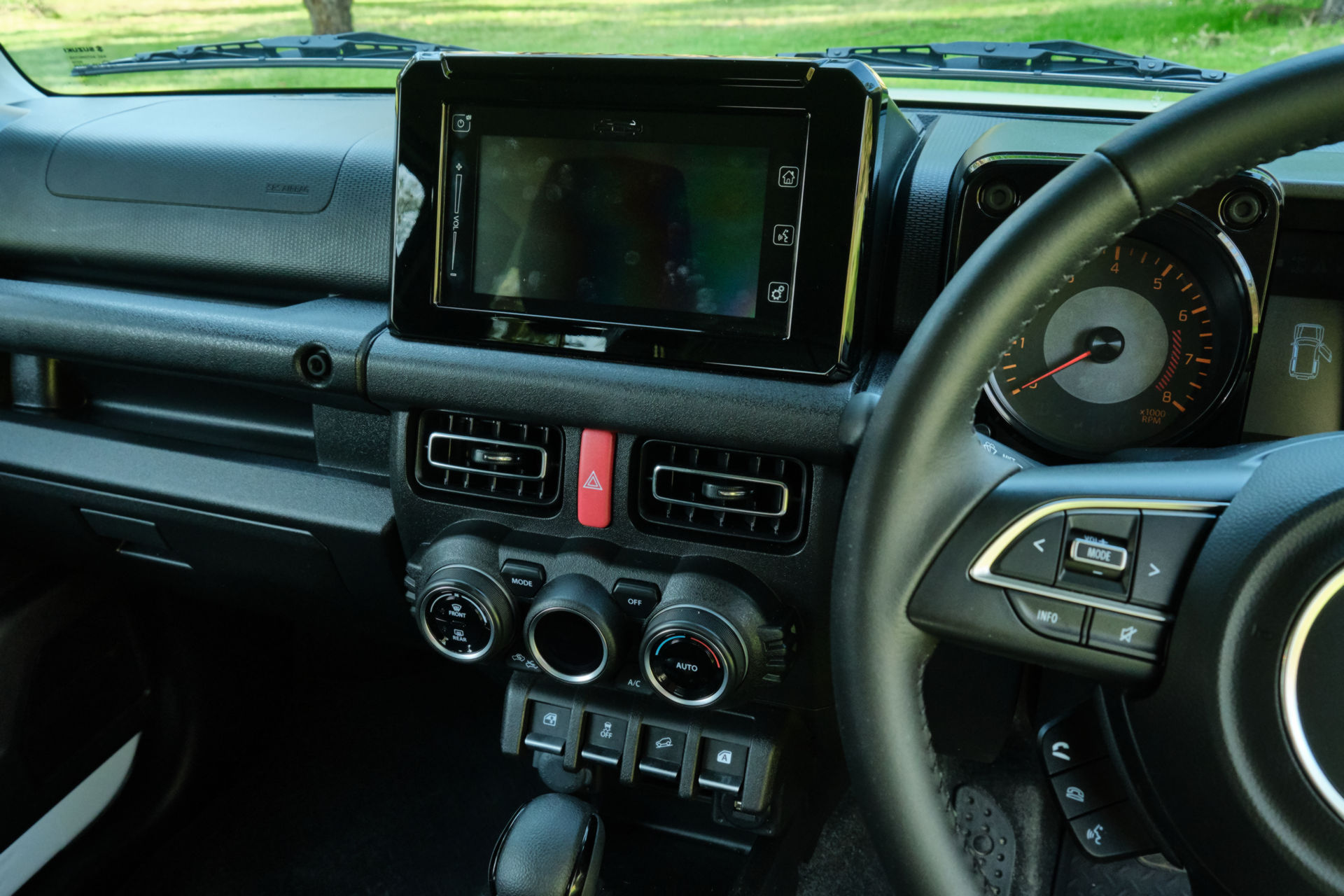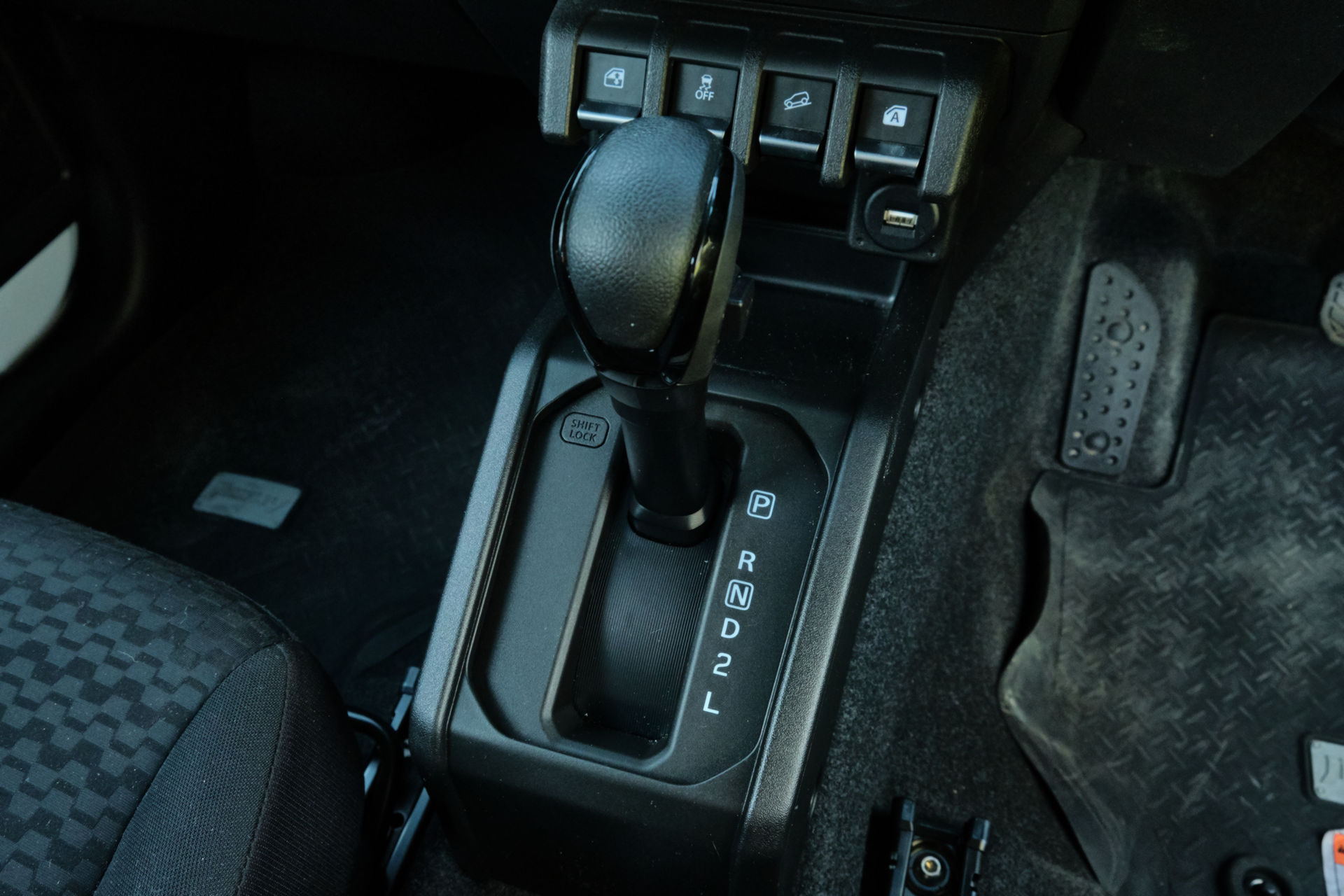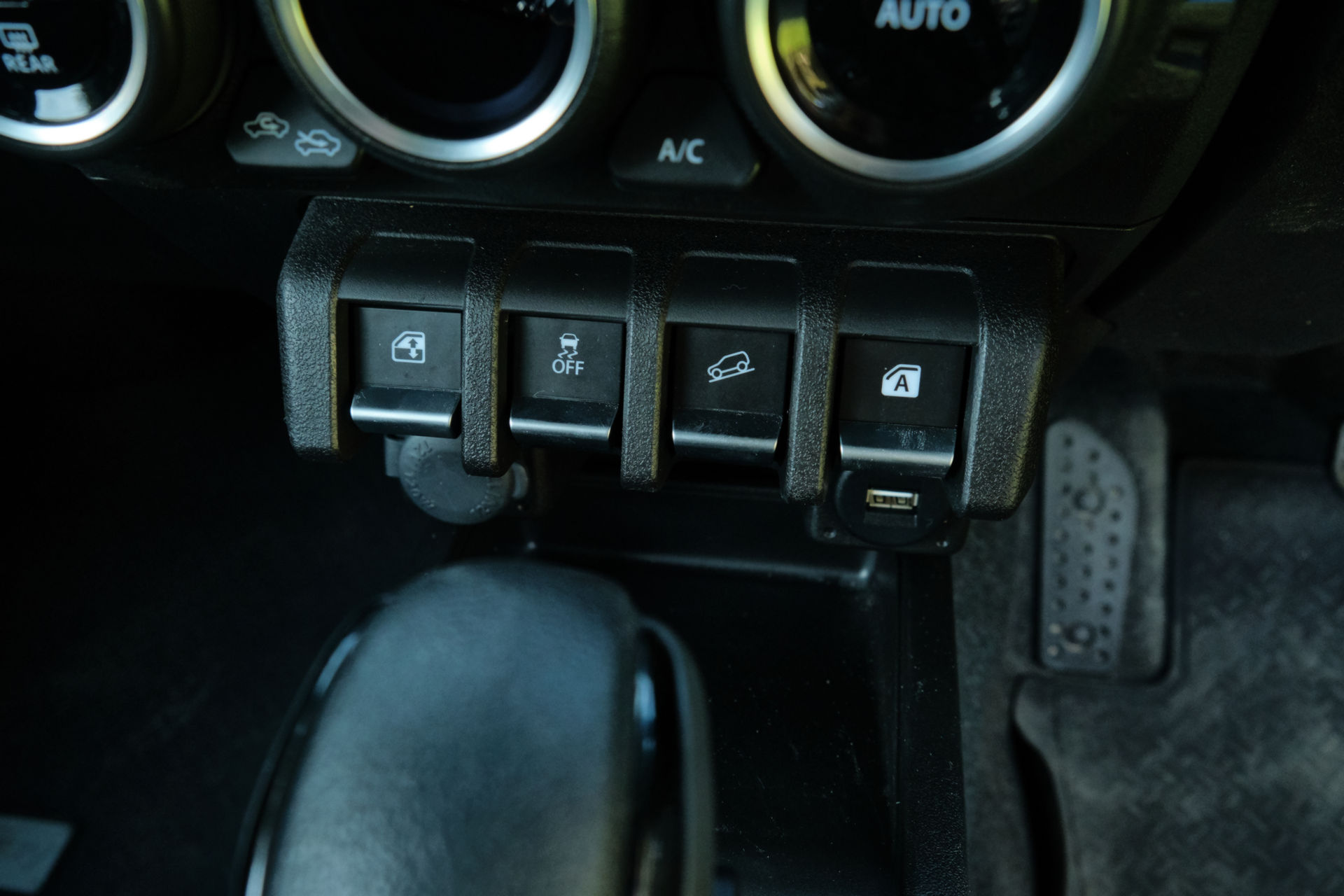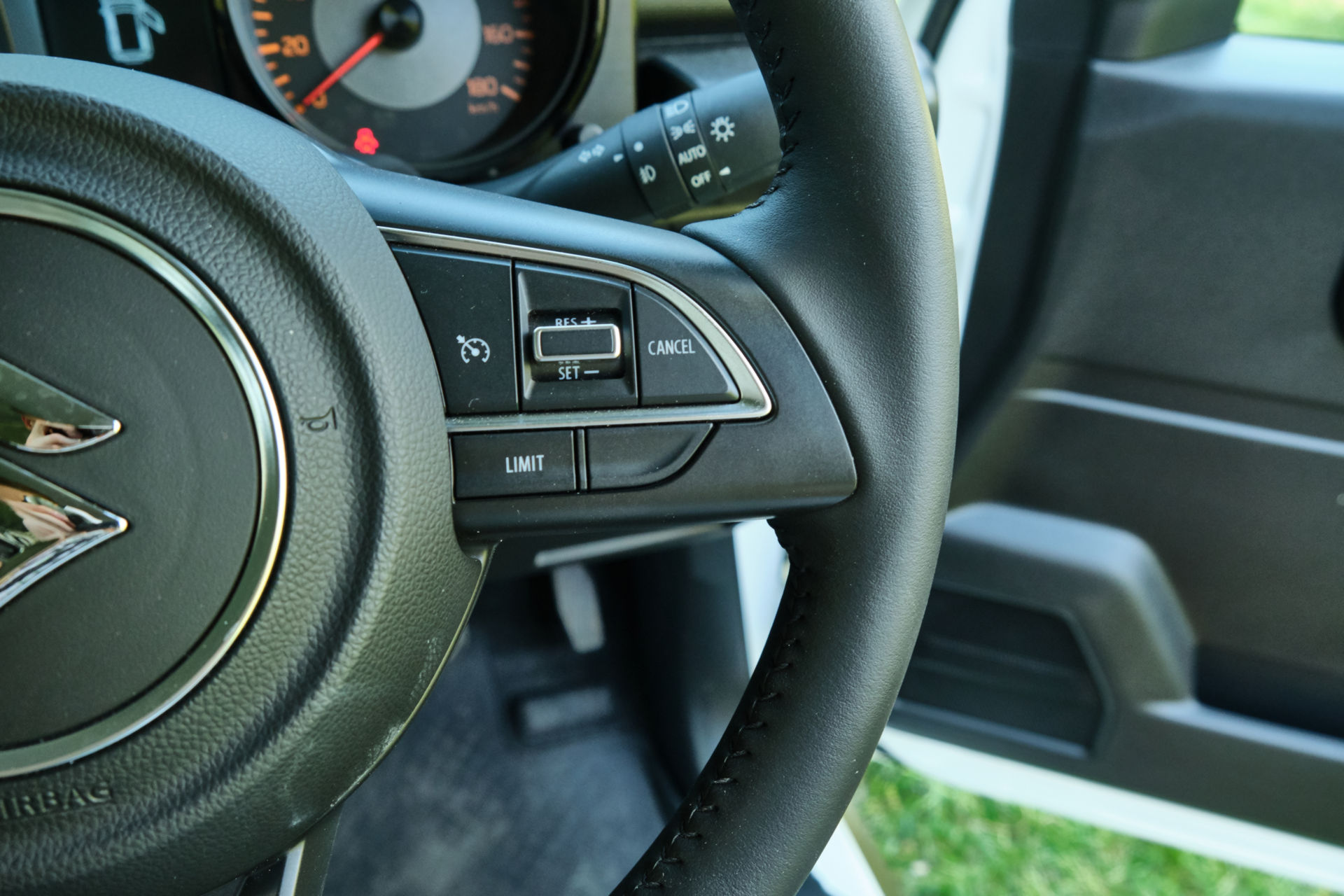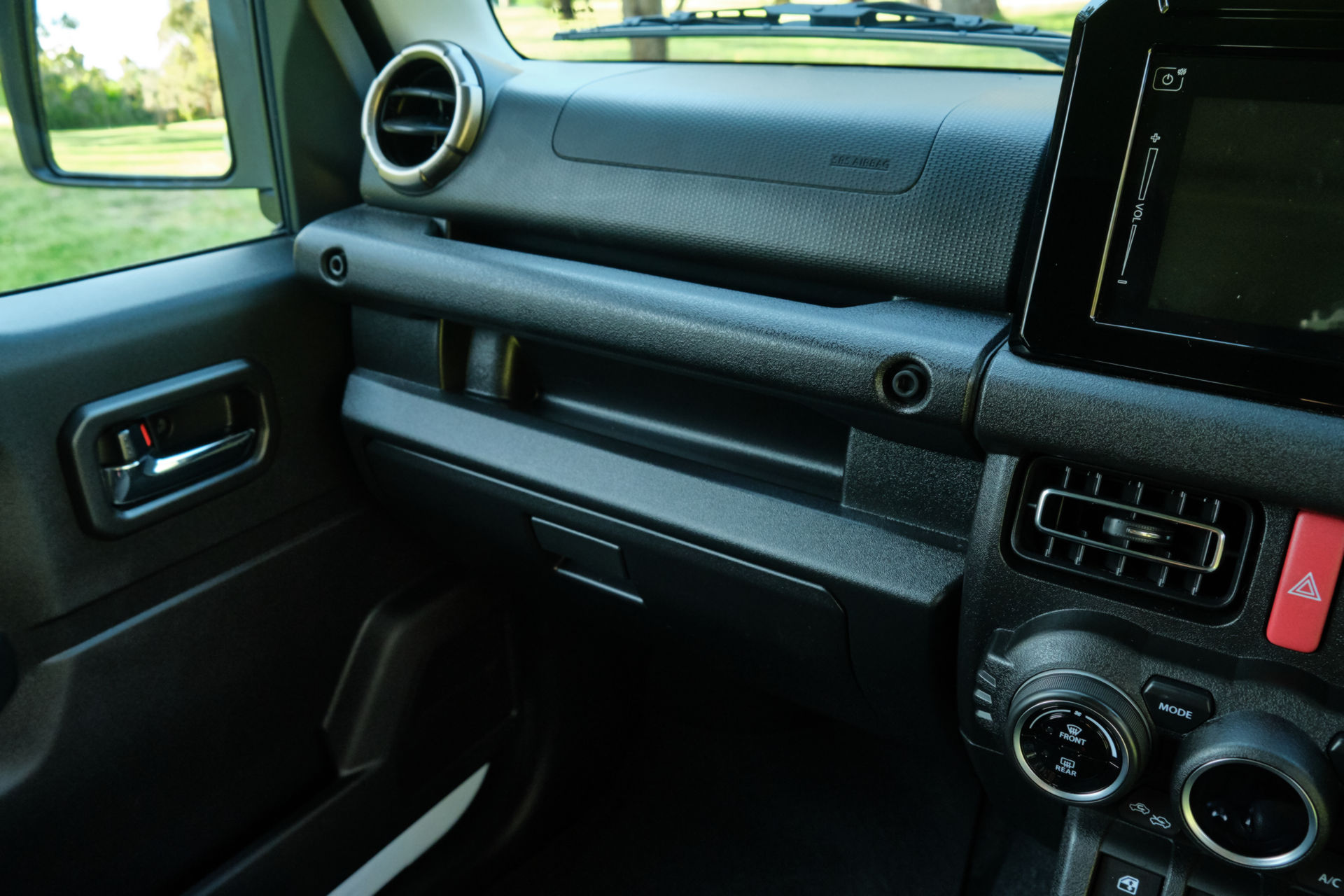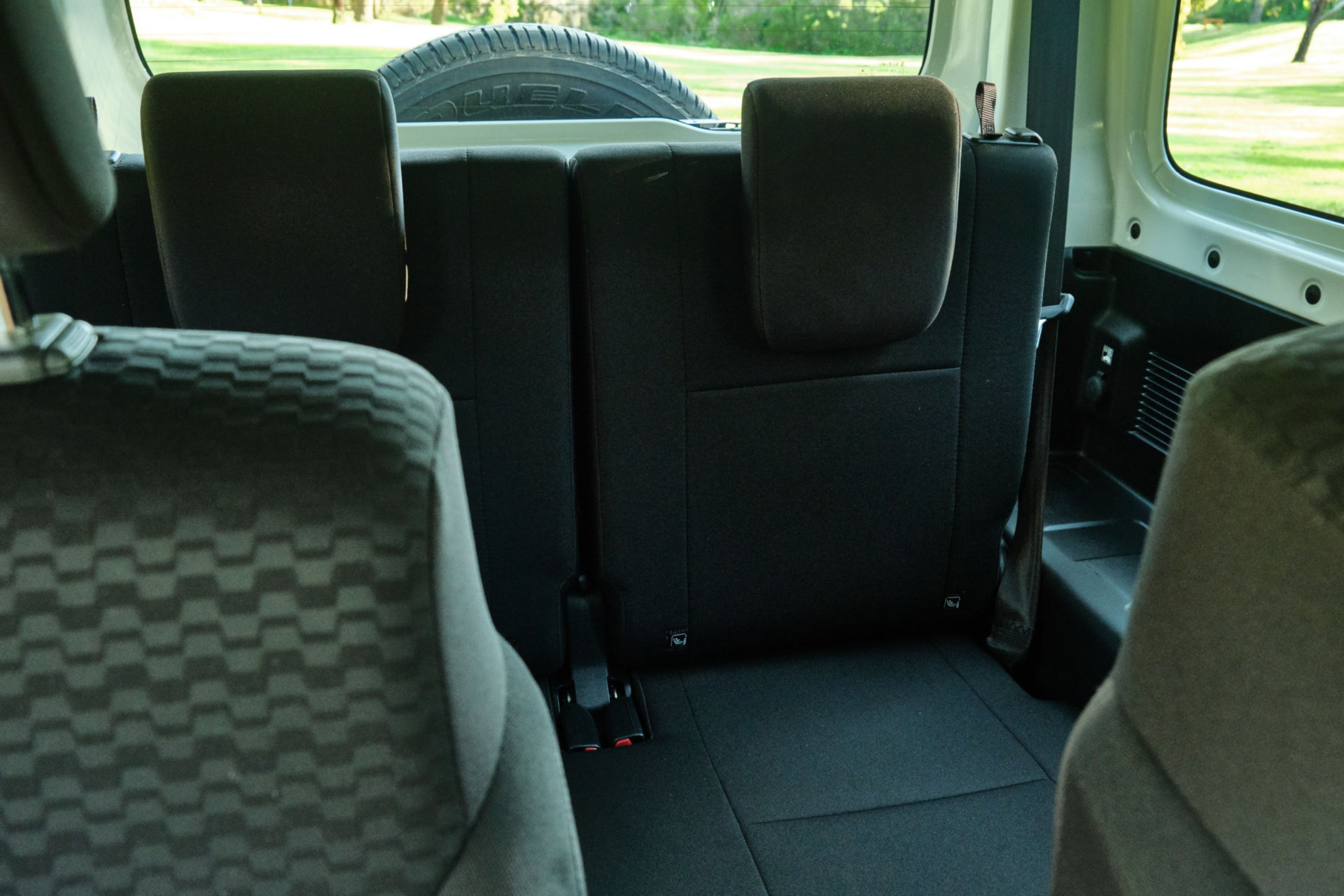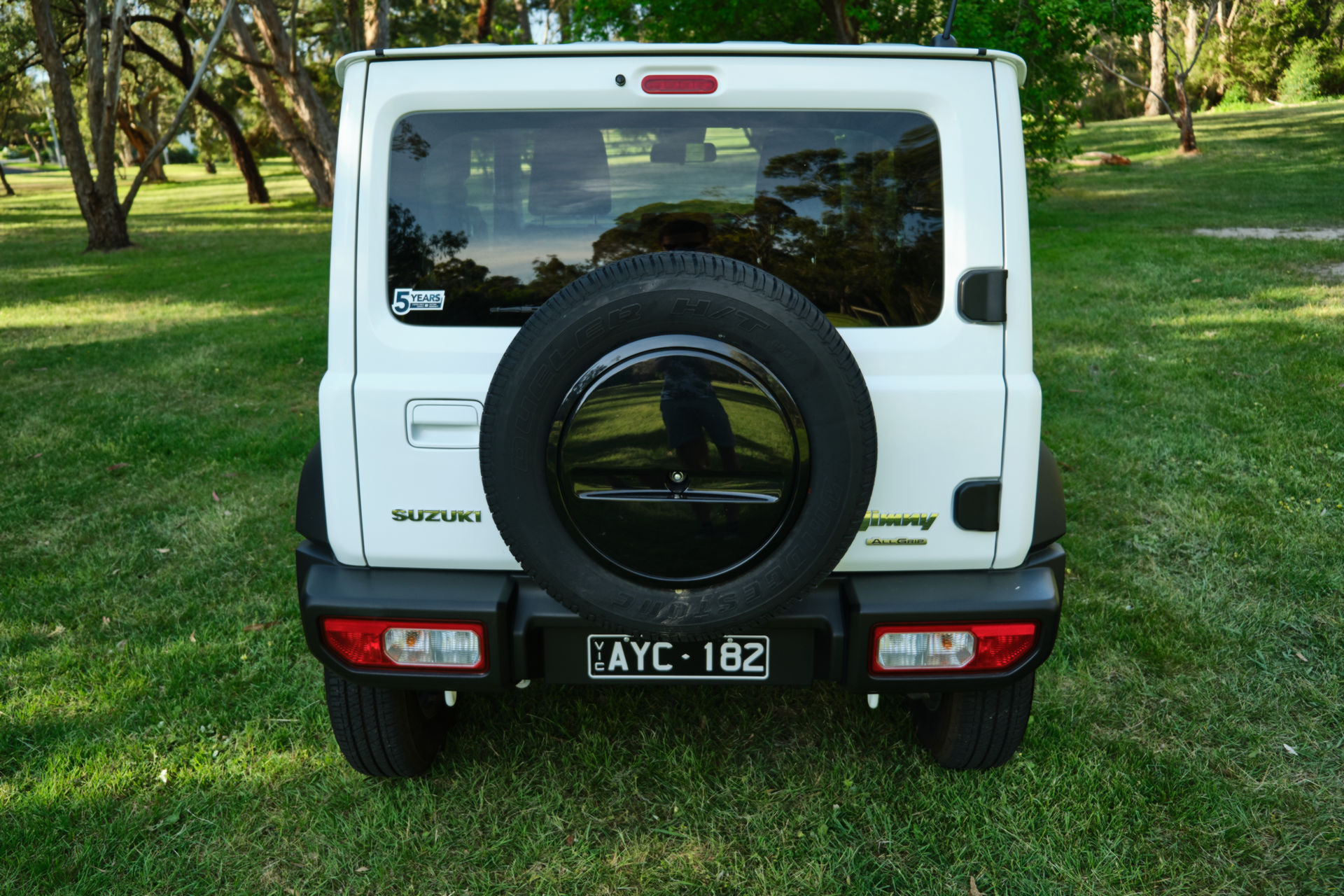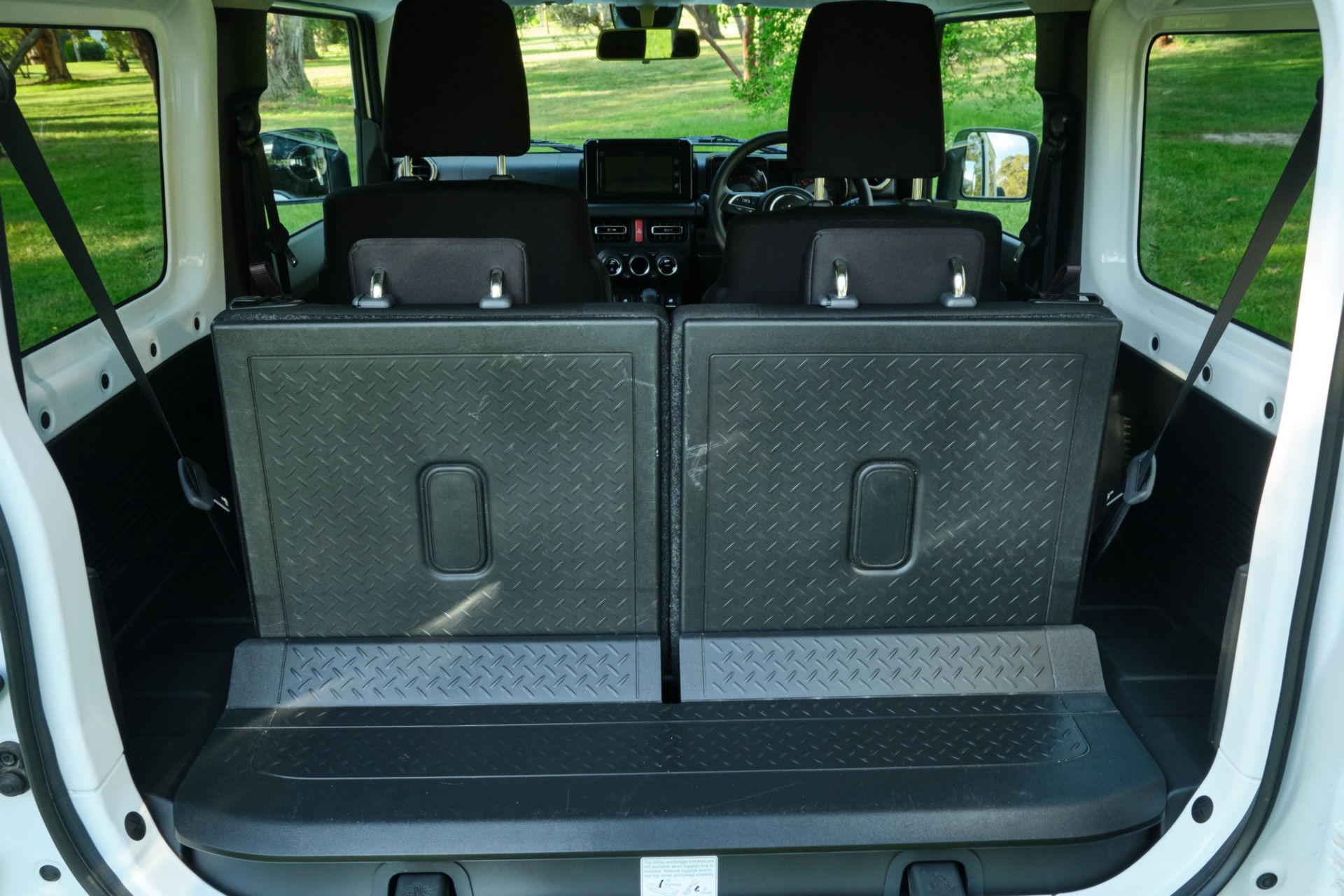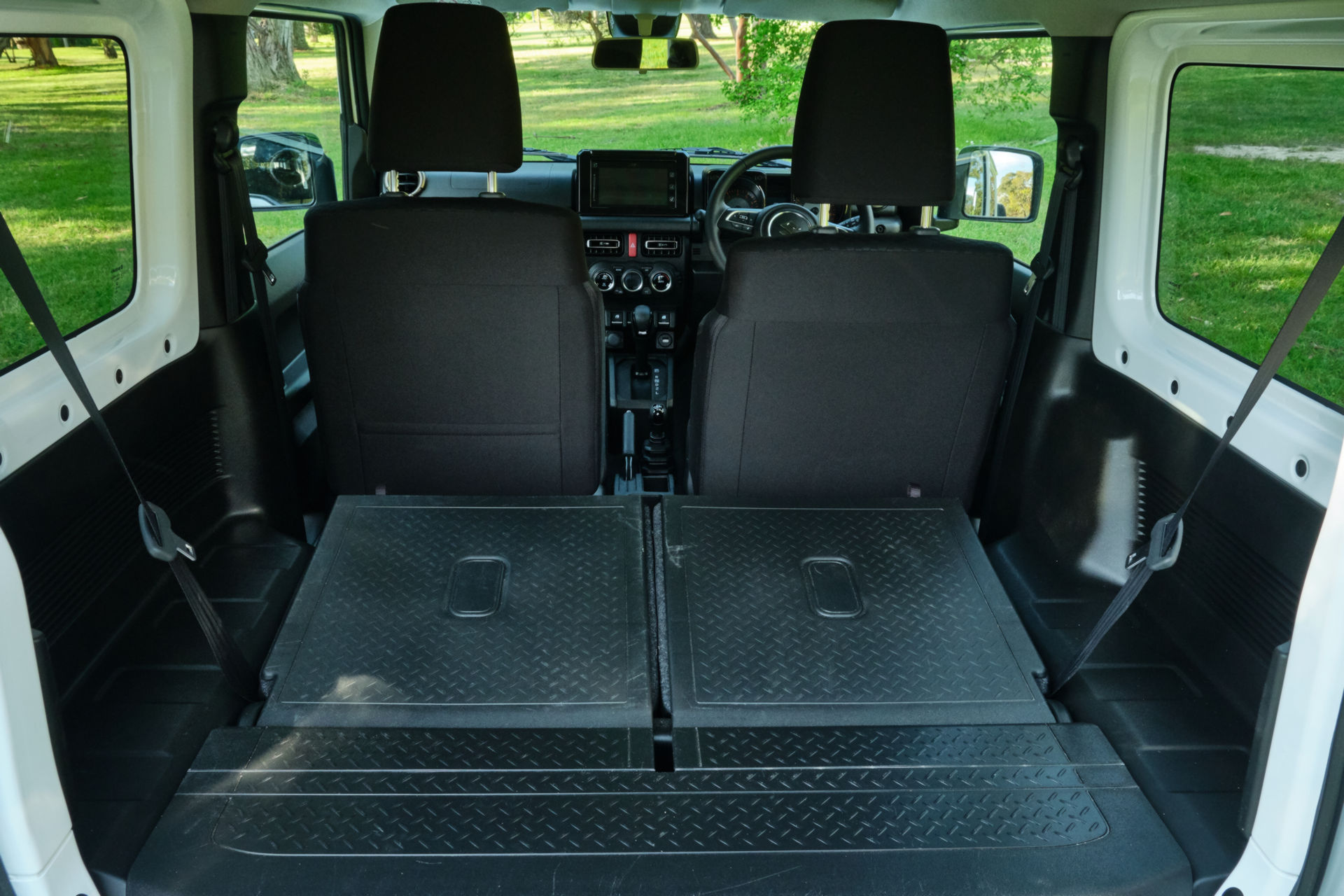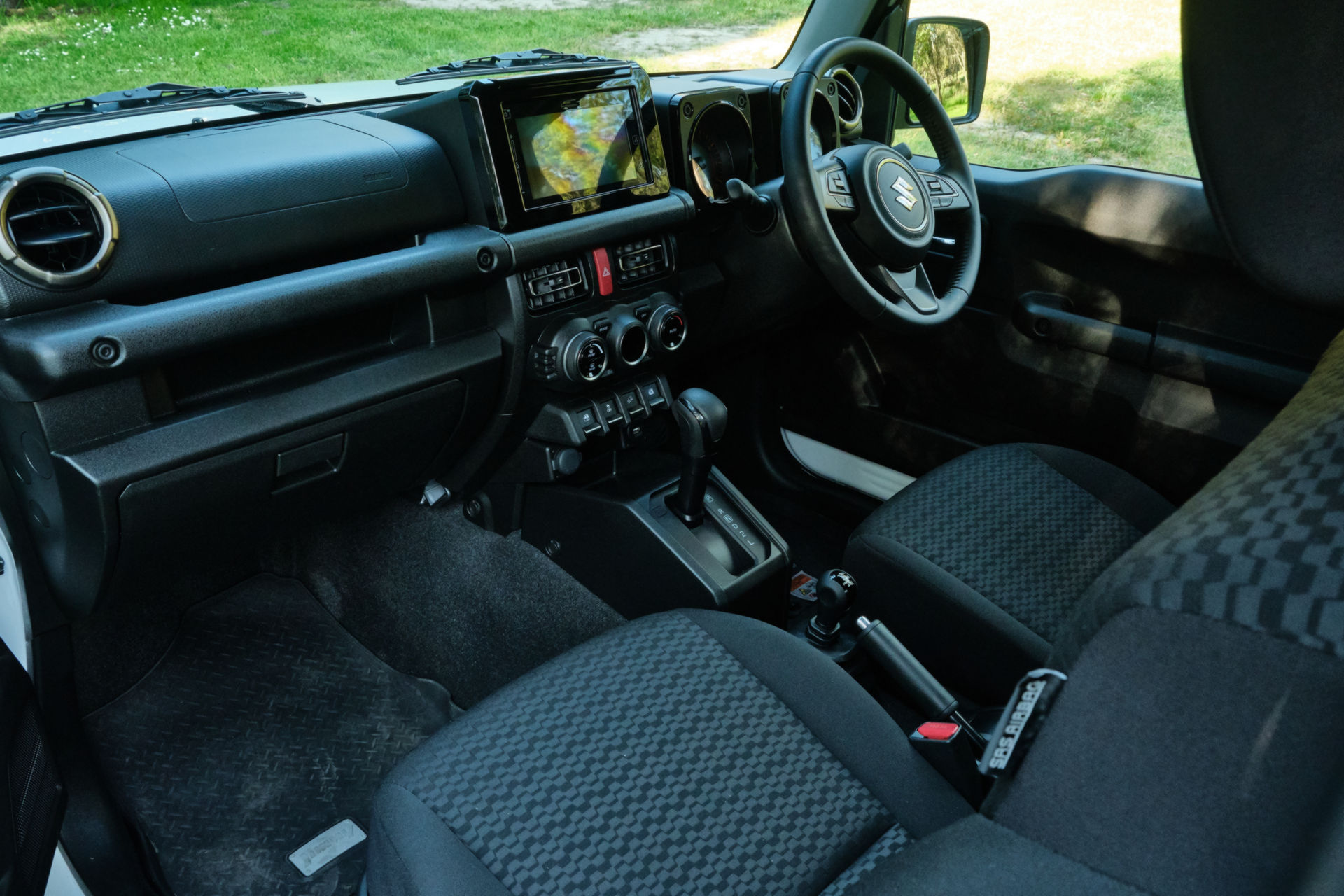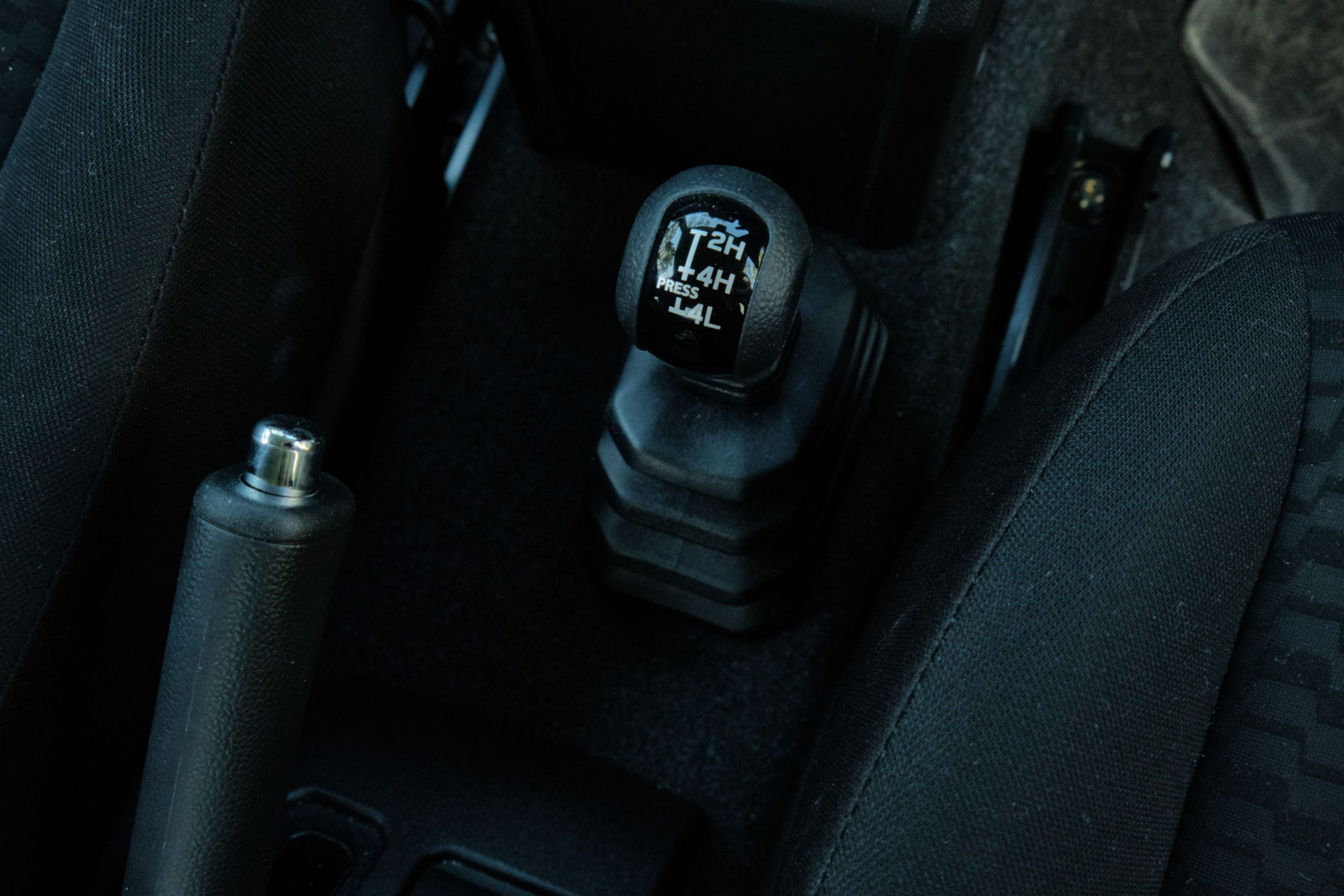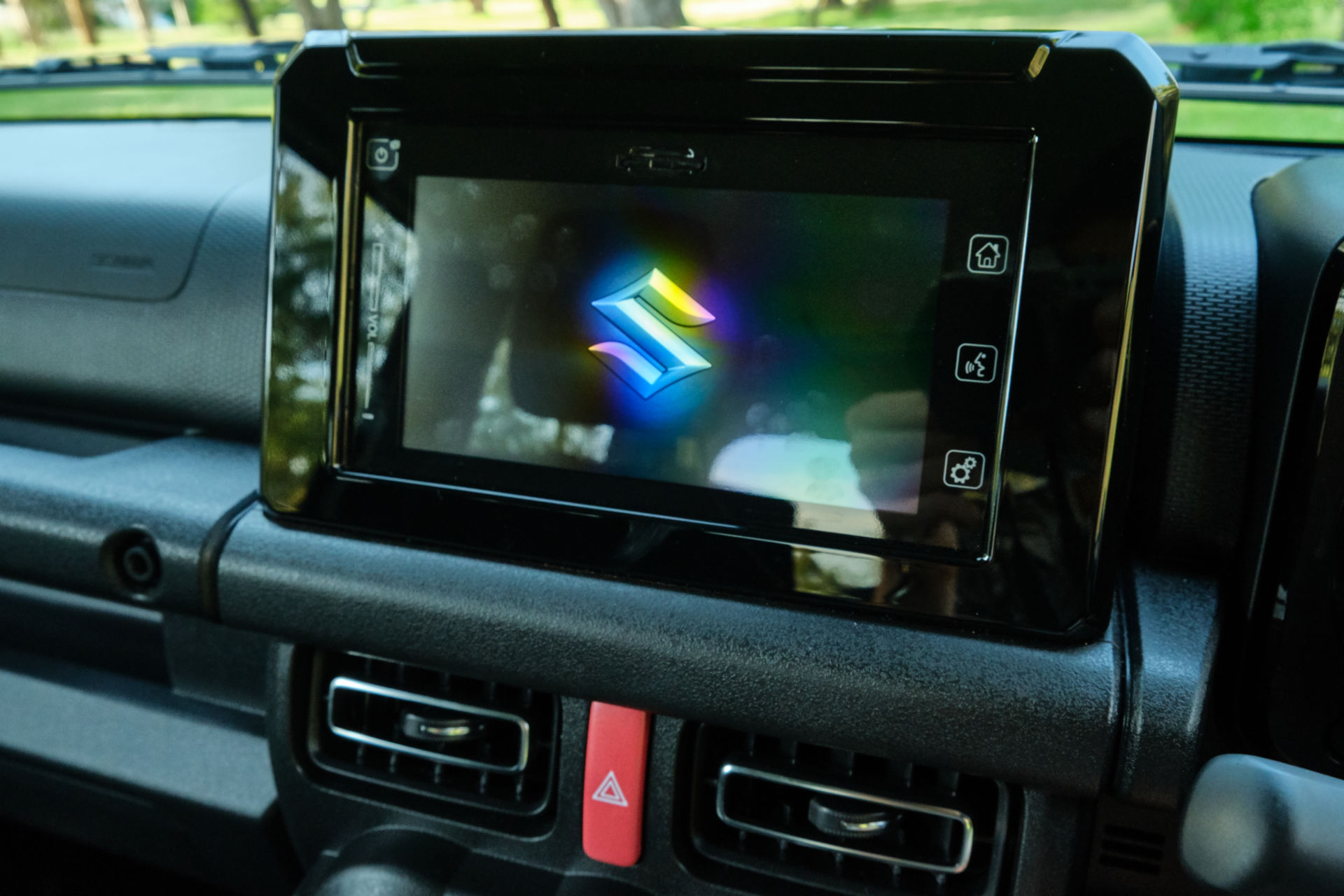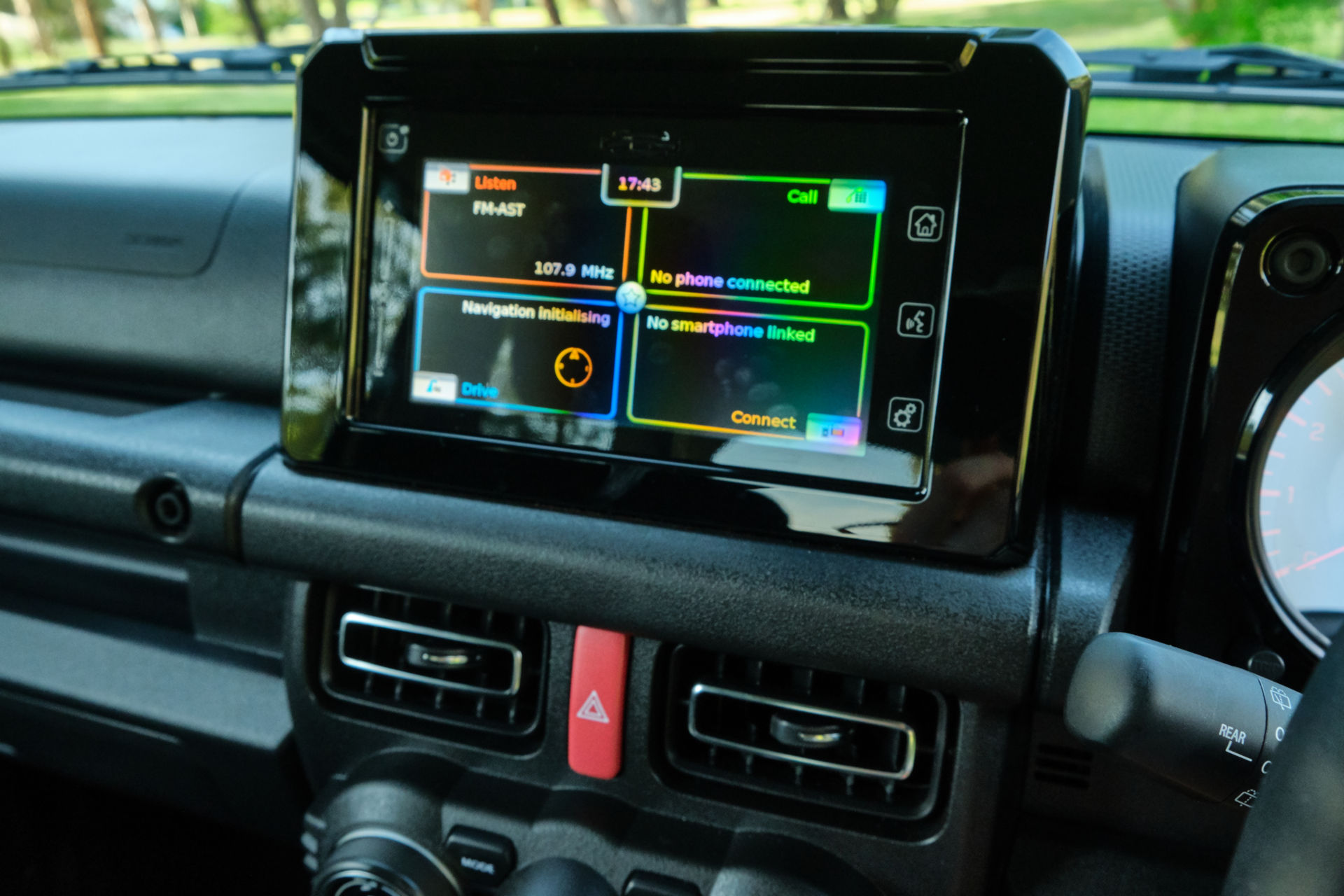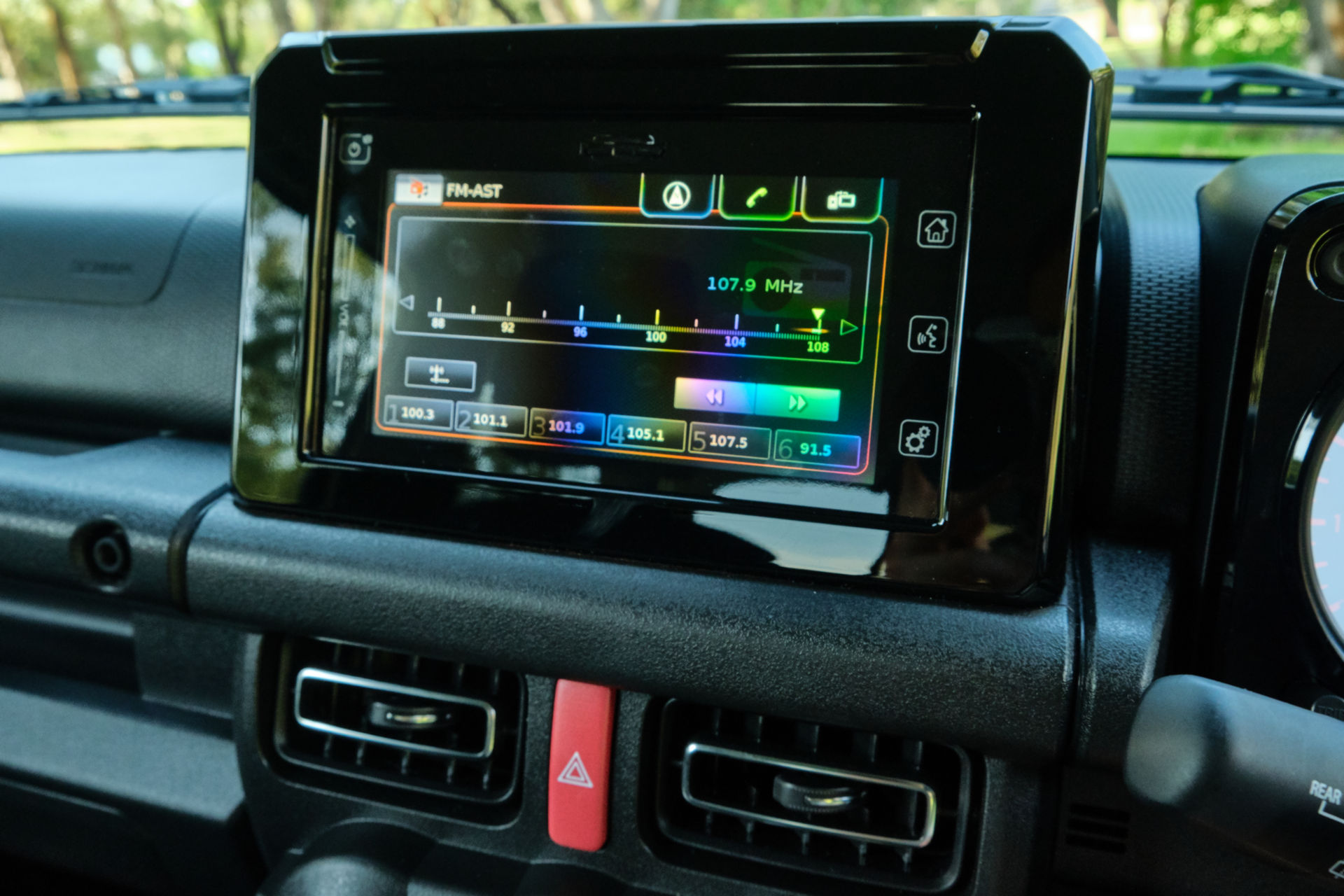Believe it or not, the Suzuki Jimny has been around since 1970. In the decades since, it has been sold in a plethora of guises and in no less than 194 countries and regions. Now in its fourth-generation, the Jimny remains as intriguing as ever.
Unveiled to much fanfare in late 2017 before production commenced in mid-2018, the latest Jimny has arguably generated more interest than any of its predecessors. Consumers and pundits alike quickly fell in love with its cute design and have applauded the Japanese automaker for sticking with the same recipe that has made the Jimny such a cult classic.
Eager to sample the latest Jimny for ourselves, we reached out to Suzuki Australia and, before long, had a brand new Jimny sitting in our driveway. Time to see if this new one is as good as we hoped.
Size doesn’t matter…
The first thing that strikes you about the Jimny is its size: it is tiny. At just 3,645 mm (143 inches) long, 1,645 mm (64.7-inches) wide, and 1725 mm (67.9 inches) tall, the Jimny is just 50 mm (1.9-inches) longer than a Kia Picanto city car. Parked next to any regular-sized hatchback, the Suzuki definitely looks small.
The obvious advantage of having a car so small is that it is very light with the Jimny tipping the scales at just 1,095 kg (2,414 lbs) with the manual transmission and 1,110 kg (2447 lbs) for the automatic. Complementing the tiny measurements and weight is an impressive approach angle of 37 degrees, a ramp breakover angle of 28 degrees, and a departure angle of 49 degrees.
Have Your Say: We’re Driving A Suzuki Jimny, What Do You Want To Know?
Only one powertrain is offered in the form of a 1.5-liter naturally-aspirated four-cylinder that produces 100 hp at 6,000 rpm and 130 Nm (95 lb-ft) of torque at 4000 rpm. Our test car featured the four-speed automatic transmission, but a five-speed stick shift is also available.
Underpinning the new Jimny is a traditional ladder frame with a three-link rigid axle suspension system and an axle housing that is 30 per cent stiffer than before. A part-time four-wheel drive system is standard offering 4H and 4L gears. In regular on-road driving, power is sent to the rear wheels.
It’s typical for off-road-focused vehicles of this sort to feature locking differentials. In fact, the Mercedes-Benz G-Class, for example, has three of them. The Suzuki Jimny has none. However, it does partly make up for this with a brake limited-slip differential function that prevents the wheels from spinning freely and redirects torque to the wheels with traction.
As this is a focused off-roader, despite the impression that its cute exterior may give off to unknowing onlookers, we embarked on a day of difficult off-roading to see what the Jimny could do.
Thrives Across Difficult Terrain
The first track that we attempted to conquer in the Jimny proved to be much more difficult than we had initially expected thanks to a generous downpour the night before. What this meant is that the usually-dry trail had sections more akin to a swamp than a rocky path. Nonetheless, the Jimny immediately showed what all the hype is about.
One could be forgiven for thinking that with just a small 1.5-liter four-cylinder beneath the hood, the Jimny would be absolutely gutless. That’s not the case. Thanks to it small size and weight, it breezes along trails without breaking a sweat. The only time we got into any kind of trouble was when the road tires simply ran out of traction trying to cross through muddy trenches. With a set of off-road or even all-terrain tires, the Jimny wouldn’t have had any issues.
Unlike most other off-roaders, which are traditionally quite big and very heavy, the Jimny doesn’t lumbar across tracks and obstacles. Instead, it skips along them and if you have a heavy right foot, it generates more than enough momentum to climb up steep hills covered in mud and loose rocks. There are times where it truly feels invincible. Suzuki quotes a wading depth in the region of two feet, but thanks to the air intake being located at the very top of the engine bay, we’re sure it could deal with water even deeper than that – although we wouldn’t suggest trying this at home…
Another remarkable thing about the Jimny is just how comfortable it is when driven along rocky trails. Whether you’re creeping over big rocks or gravel paths filled with potholes, the off-roader smooths out everything beautifully and the faster you drive, the more comfortable it becomes. The lack of locking differentials may seem like a deal-breaker on paper, but we never found ourselves in a position where we needed them.
Both the manual and automatic-equipped Jimnys come standard with a Hill Descent Control function. We put this system to the test down a section of track with a decline of at least 45 per cent and it worked flawlessly.
The Achilles heel
When driven on the road, the Jimny reveals its other, less refined side. At speeds above 100 km/h (62 mph), the off-roader becomes very ‘floaty’ and the lack of steering feel can make it difficult to place through corners. On more than one occasions, I found myself having to quickly unwind the steering after making a 90-degree turn as the car didn’t want to do it by itself, while body roll through corners is also excessive.
Much to my surprise, I never found myself yearning for more power during a week with the Jimny. Having a car that’s fast and has a lot of power is great, but the truth is that if you’re driving in a city or a suburban area, the rate at which you can accelerate is usually determined by how fast the vehicles around you are traveling. Most of the time, that is rather slow. Reaching highway speeds in the Jimny isn’t all that difficult either, but does require a bit of patience on the part of the driver as it takes roughly 13 seconds to hit 100 km/h from a standstill.
A cabin that could be improved
We found the interior of the Jimny to be a mixed bag. It is dominated by hard black plastic which suits its off-road-focused nature to a tee, but can become a little tiresome when driving on the street. It is clearly more about function than it is form. Among the touches we did appreciate were the squared gauge cluster surrounds and the easy-to-operate steering wheel controls. On the other hand, the infotainment system feels very outdated and is in dire need of a refresh. All in all, the cabin is practical but not stylish.
All four seats (if you can classify those at the rear as seats…) are basic and finding a good driving position is difficult for anyone over 6 foot. I was particularly unimpressed with our little the front seats slide backwards and would have liked to slide the seat back three or four additional inches – plus, there is no height adjustment.
With the rear seats in their upright position, Suzuki quotes 85 liters (3 cubic-feet) of luggage space. In reality, this translates to enough room for two (maybe three) sheets of A4 paper. With the rear seats folded down, luggage space increases to a more acceptable 377 liters (13.3 cubic-feet).
Bang for the buck
In Australia, prices for the Jimny start at AU$23,990 (US$16,409) for the five-speed manual and AU$25,990 (US$17,777) for the four-speed auto we had. That represents a staggering value proposition for those looking to get behind the wheel of a capable off-roader on a budget. By comparison, a Jeep Wrangler starts from AU$48,950 (US$33,481) locally, although it does belong to a more upmarket segment and the two are not direct rivals.
In fact, there’s no other vehicle on the market quite like the Jimny. It’s well priced and proves that enthusiast-oriented off-roaders don’t have to break the bank. Outfitted with some minor modifications, such as the tires, we can’t think of a more enjoyable way to get out of the city and enjoy nature.





